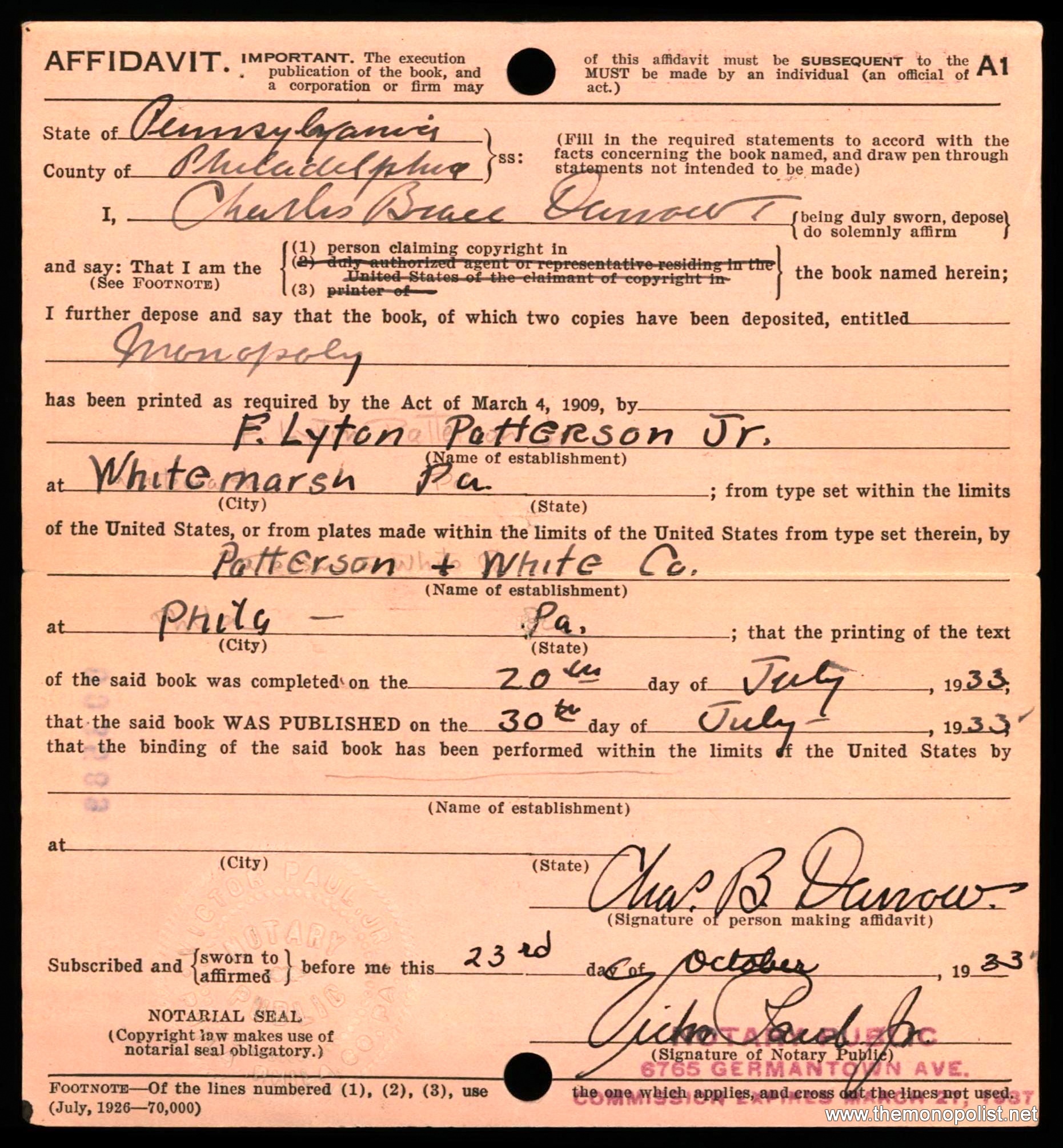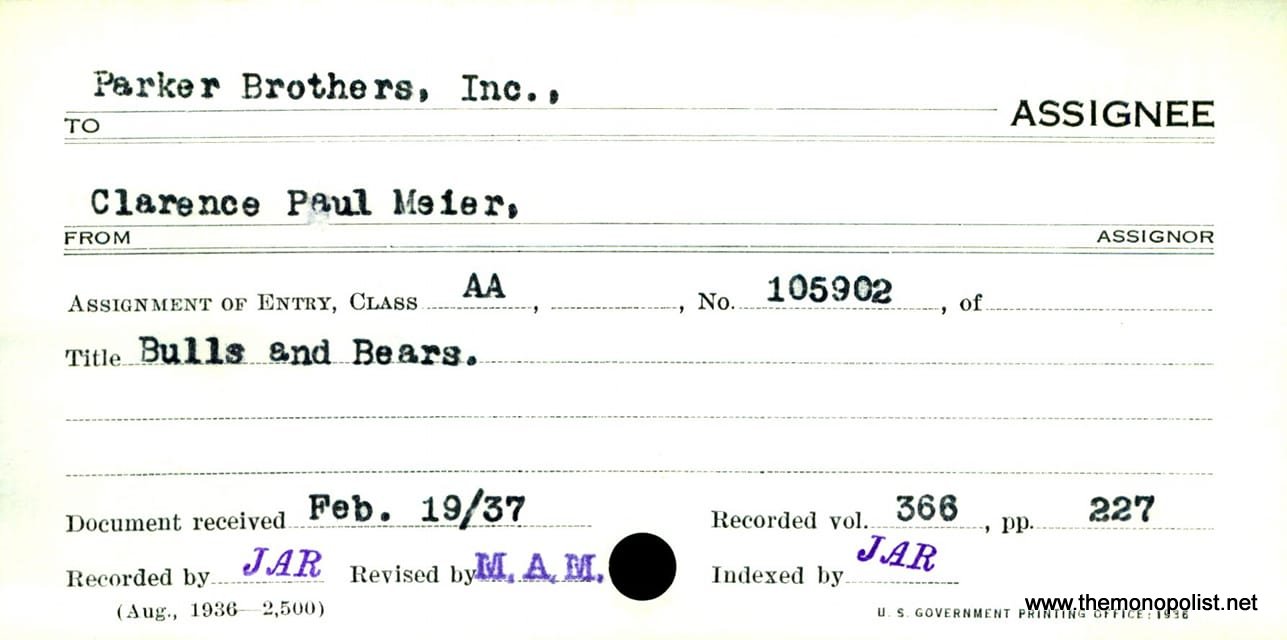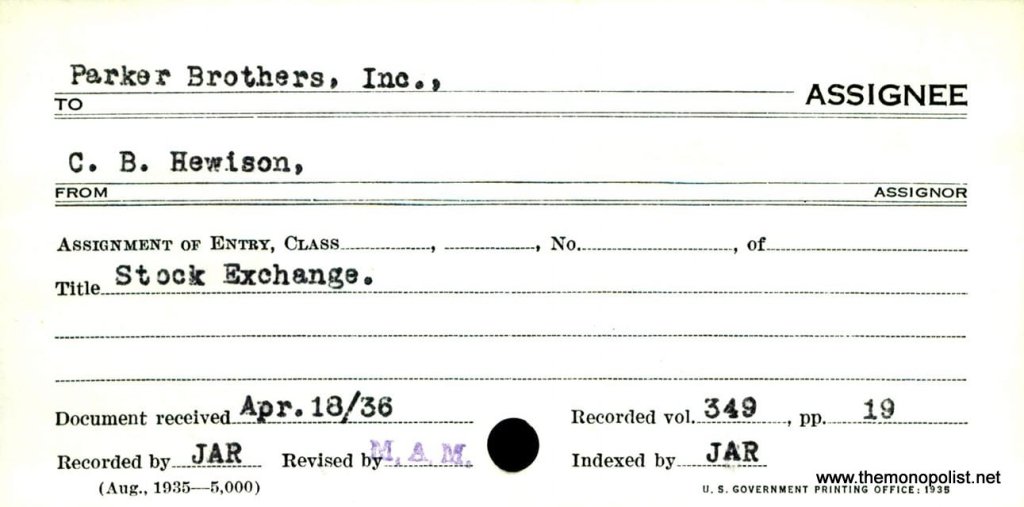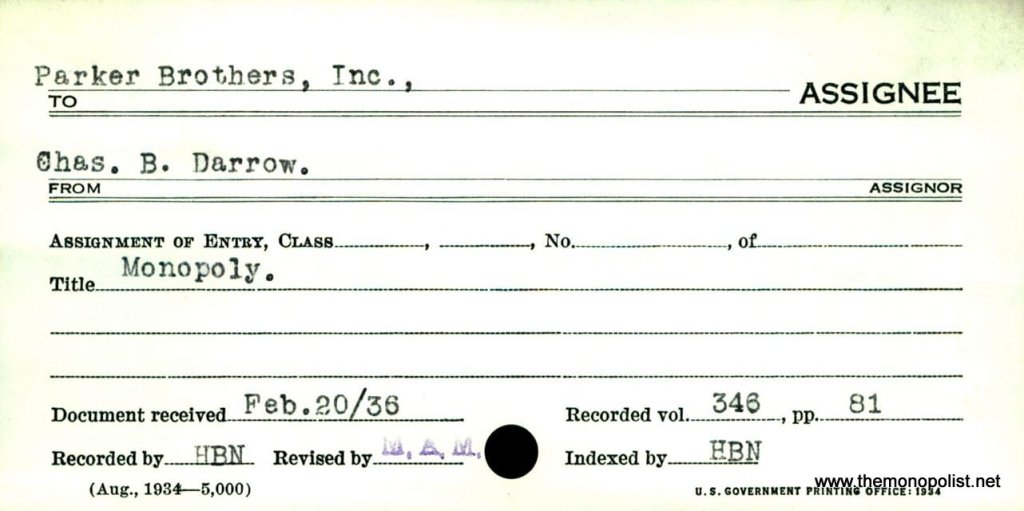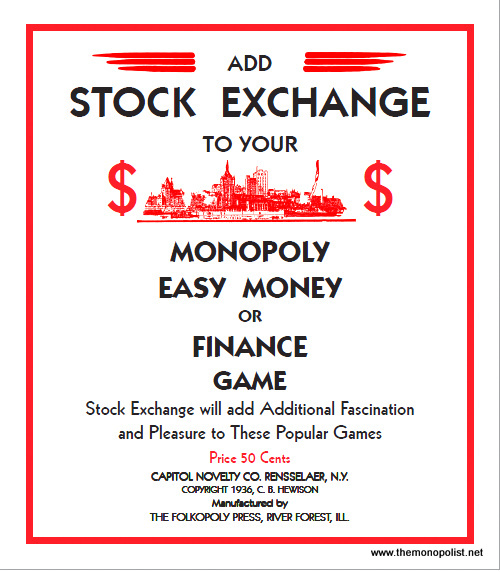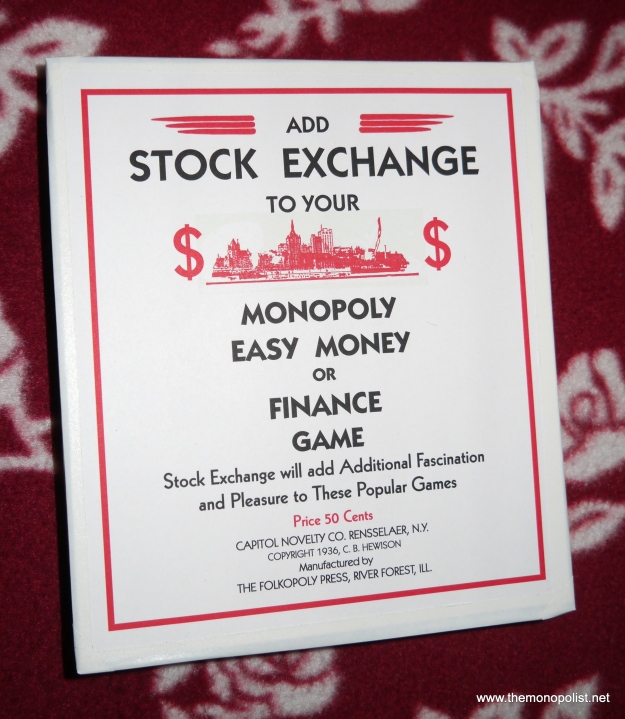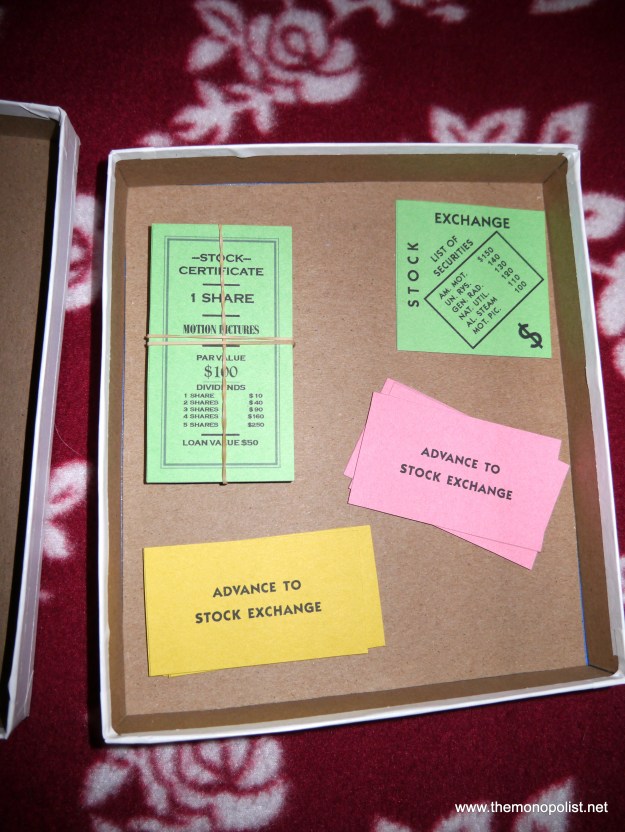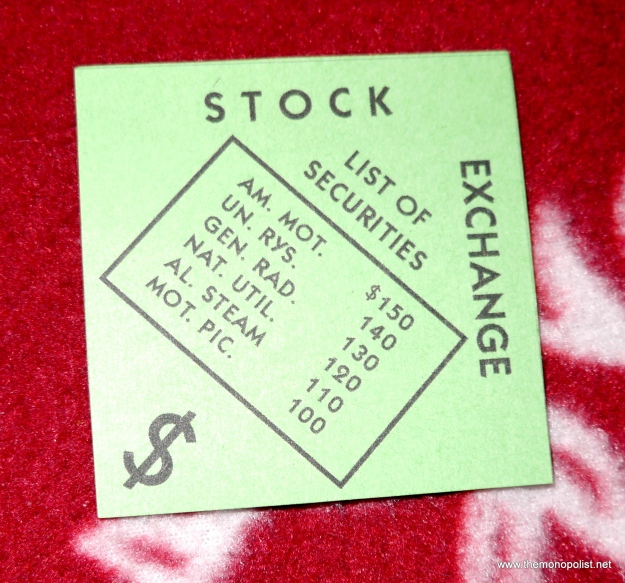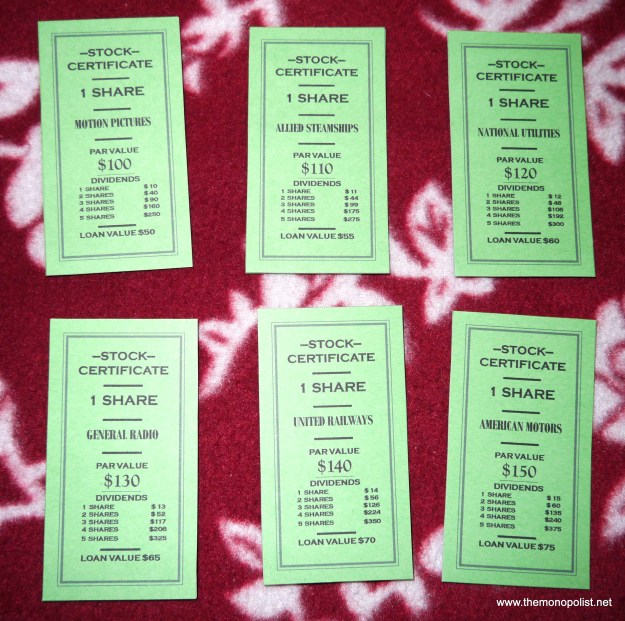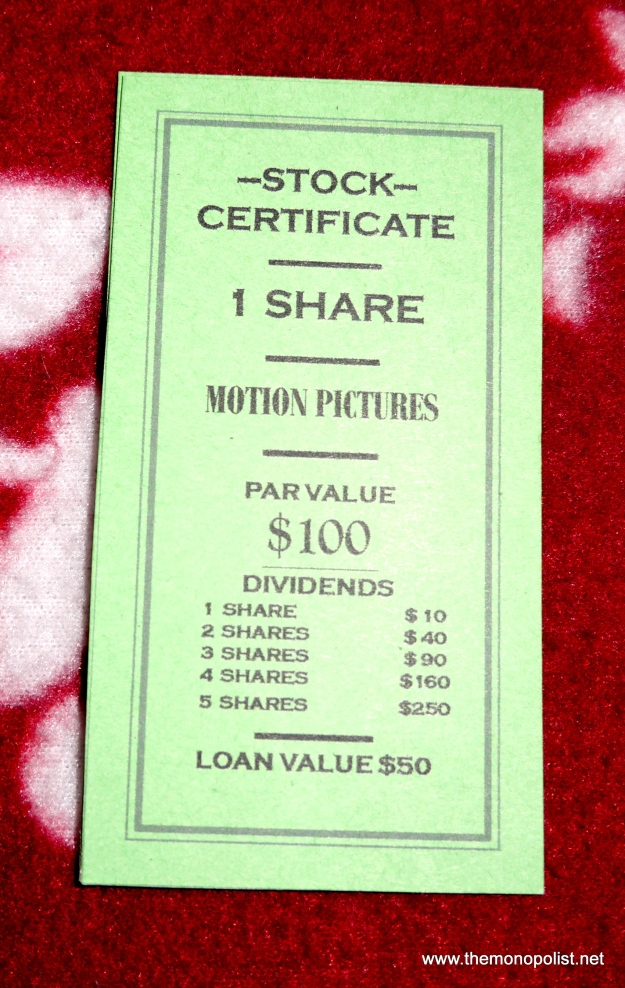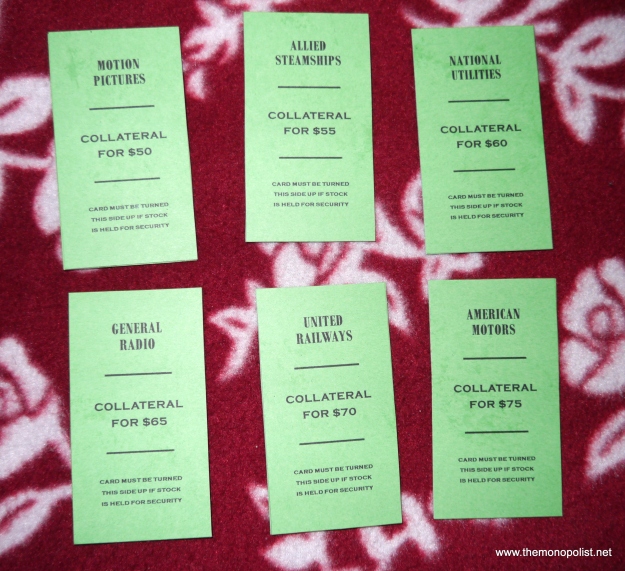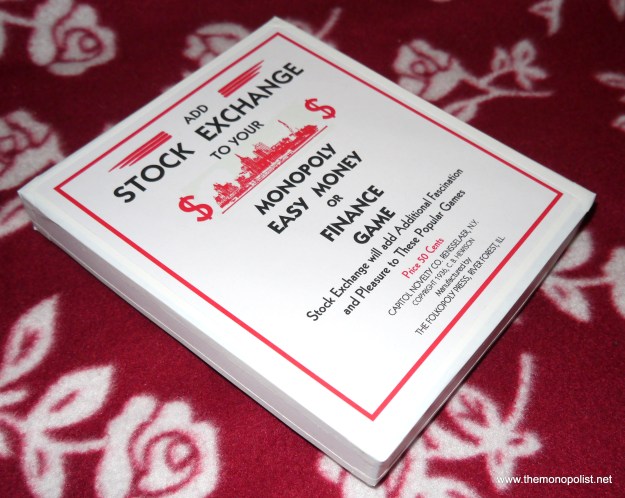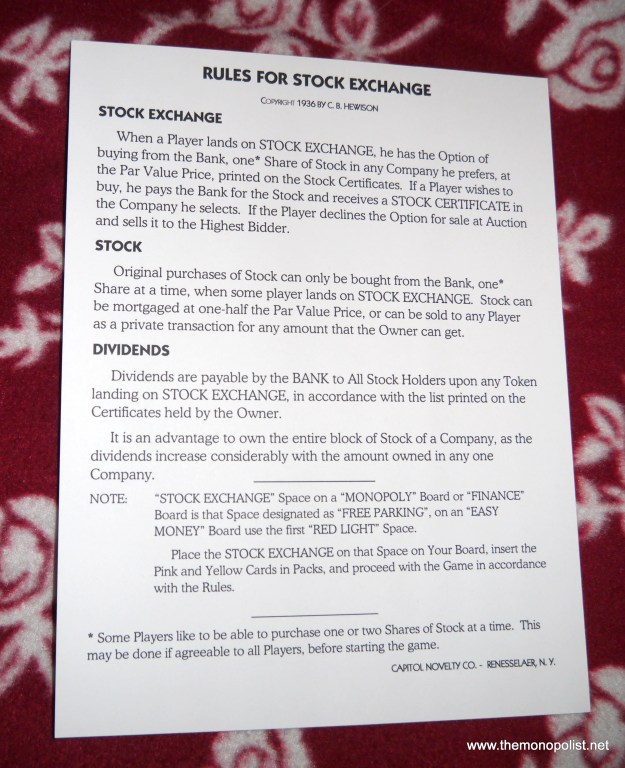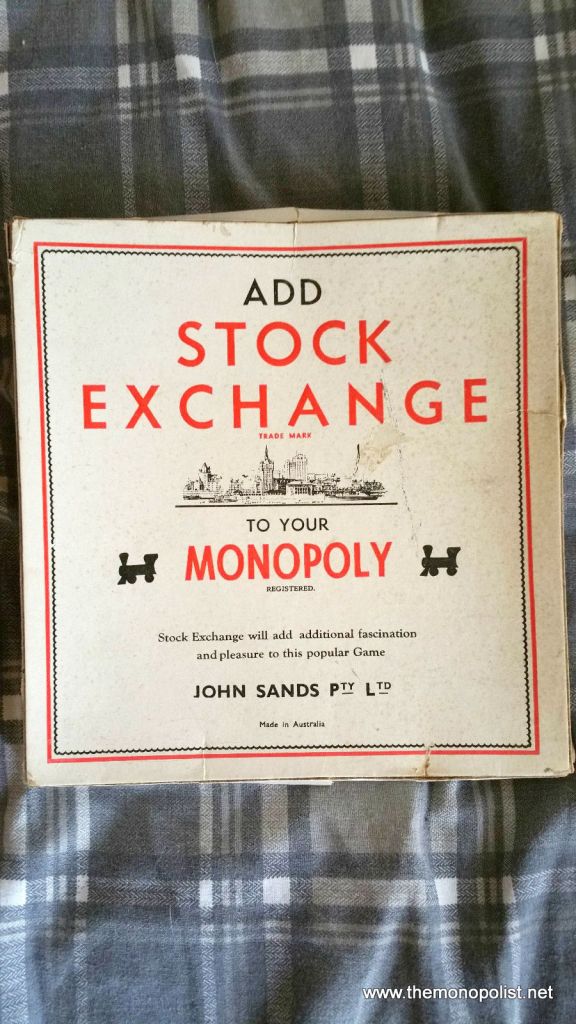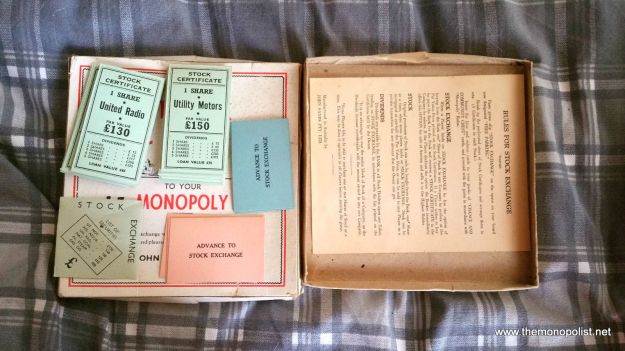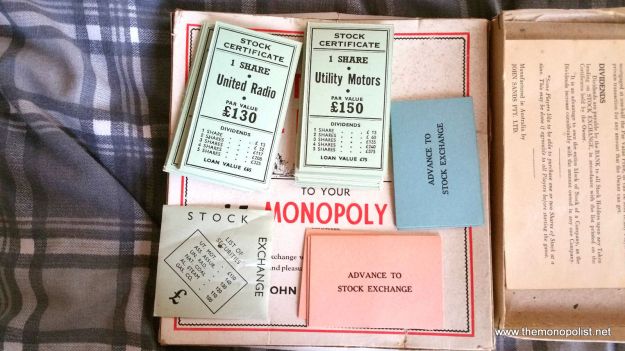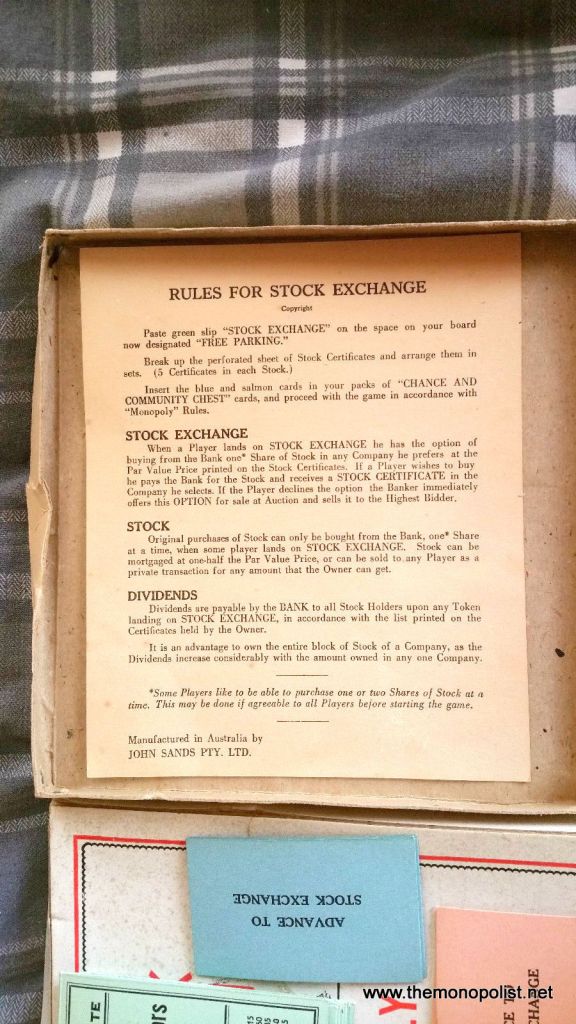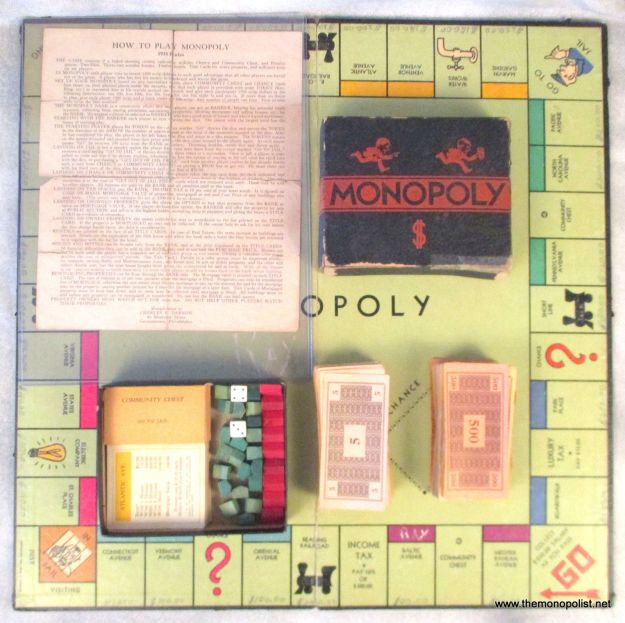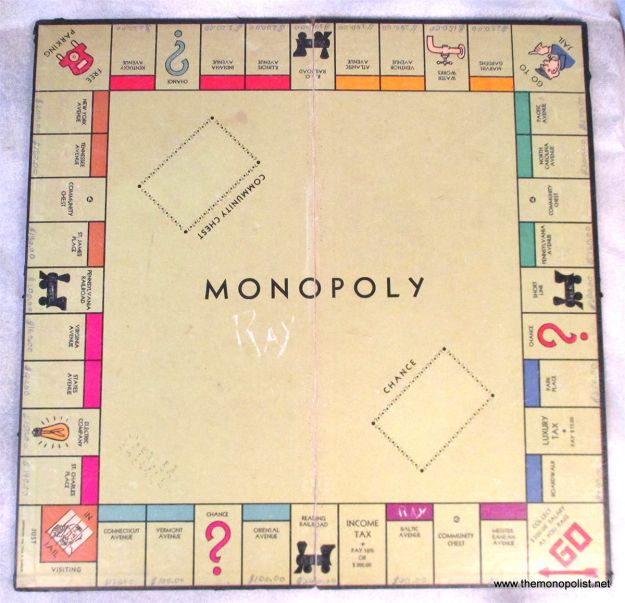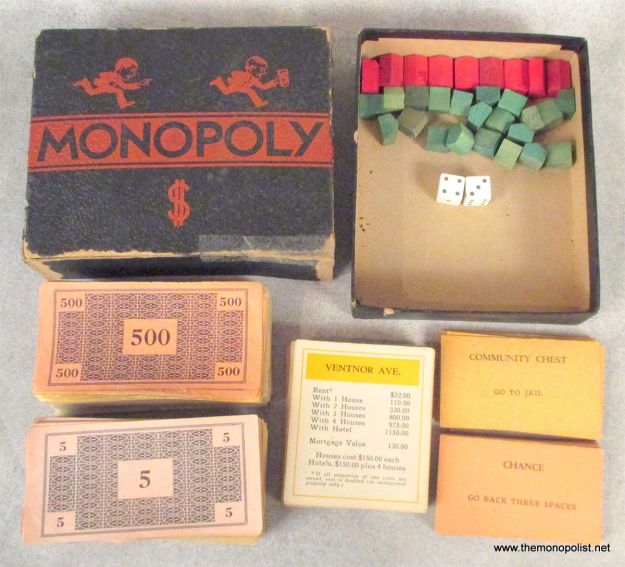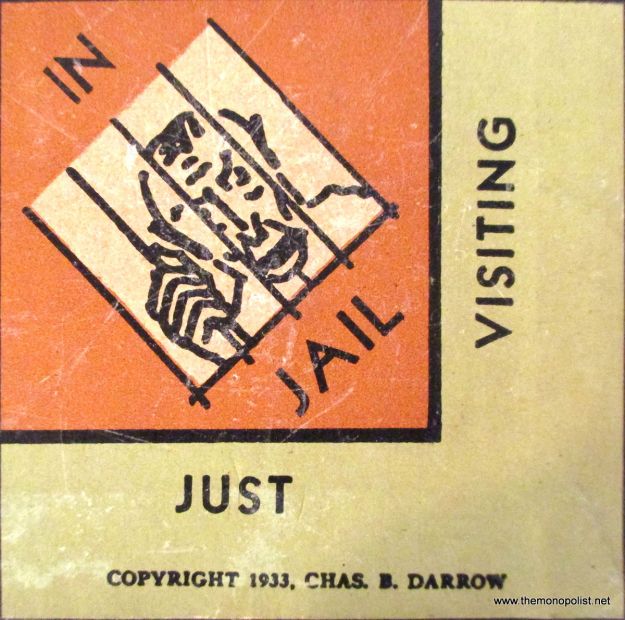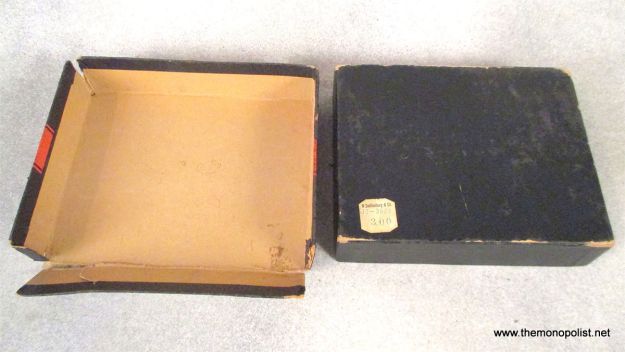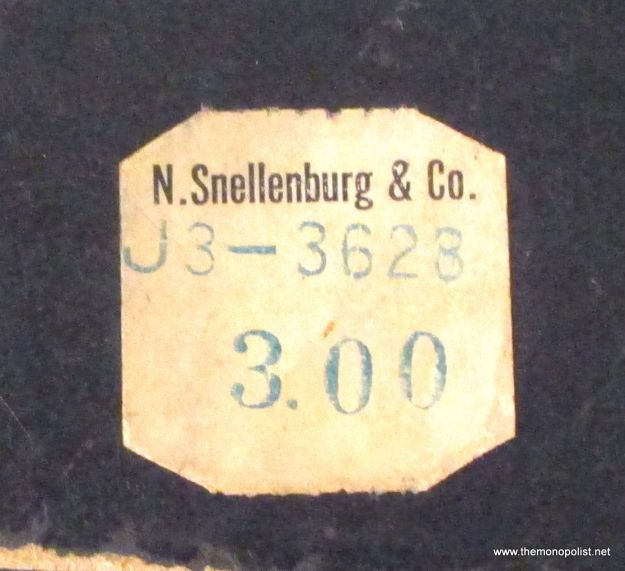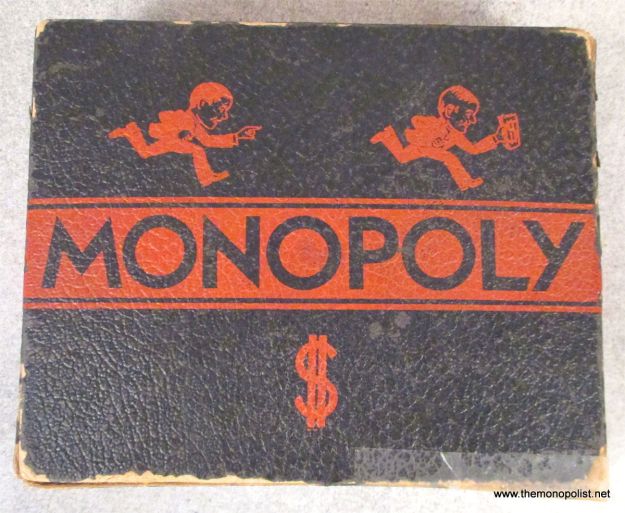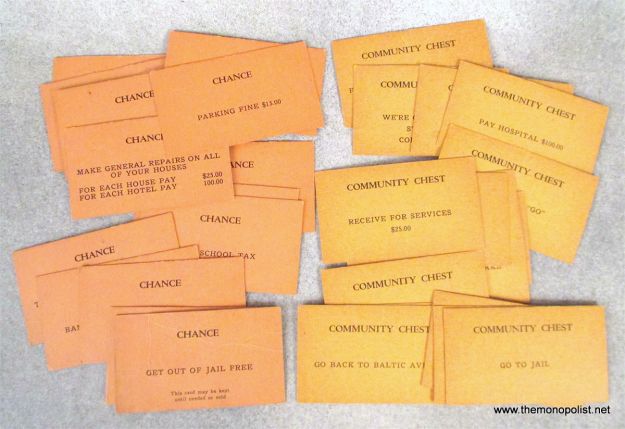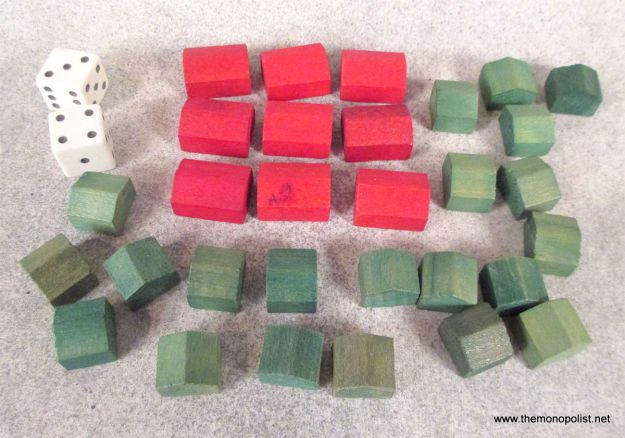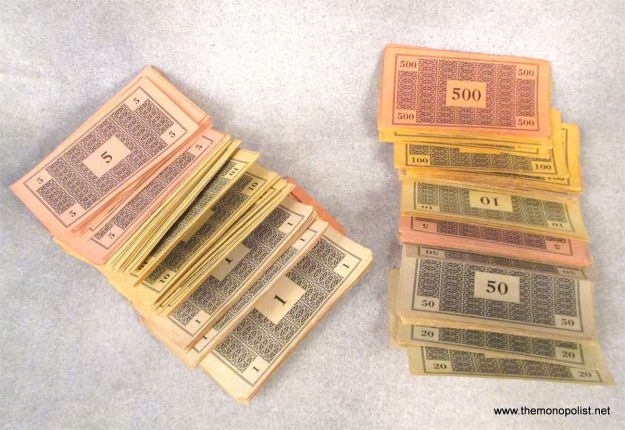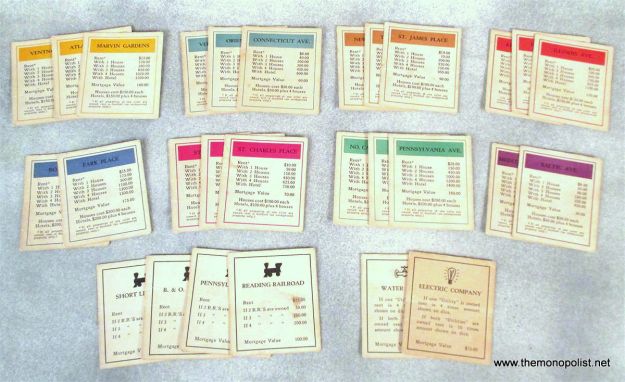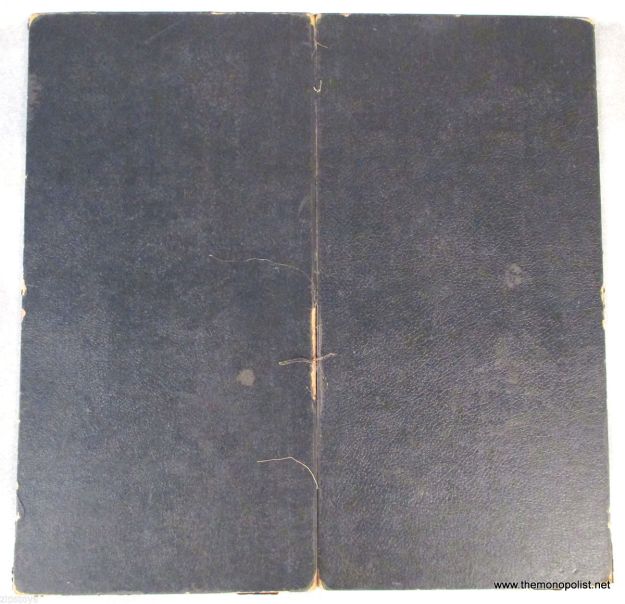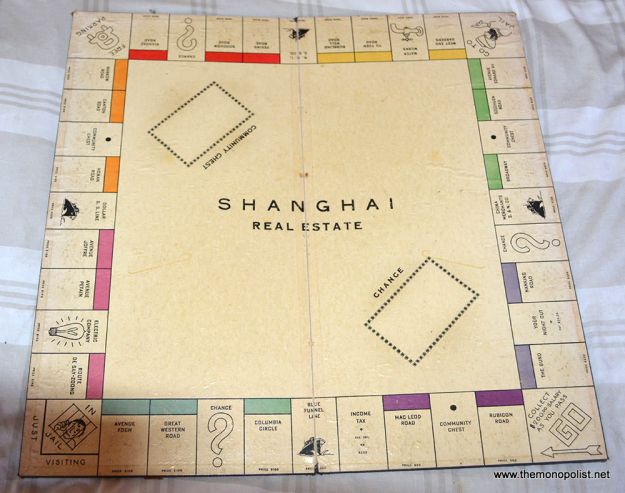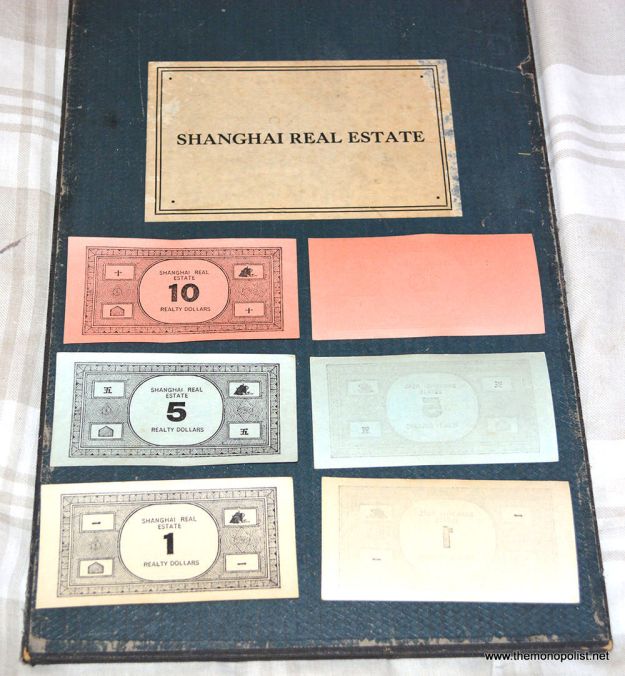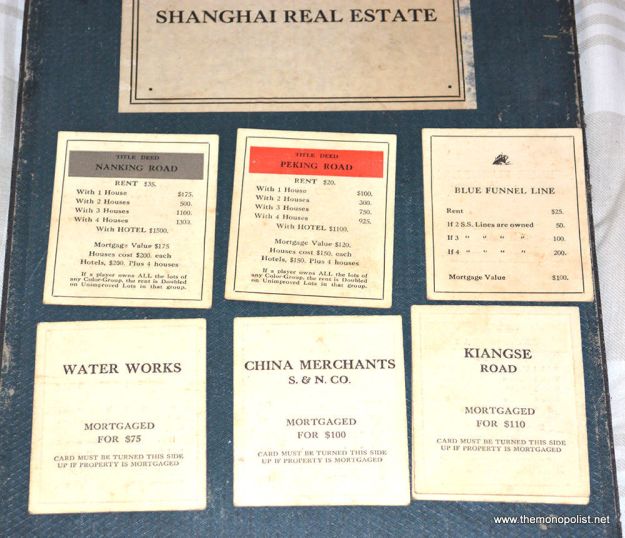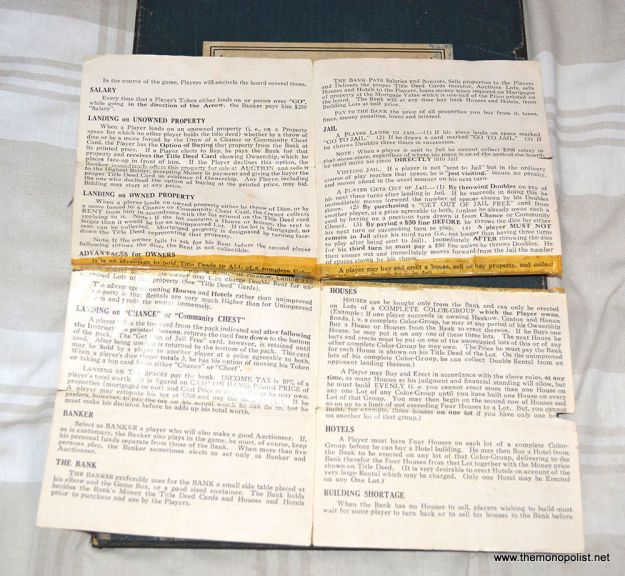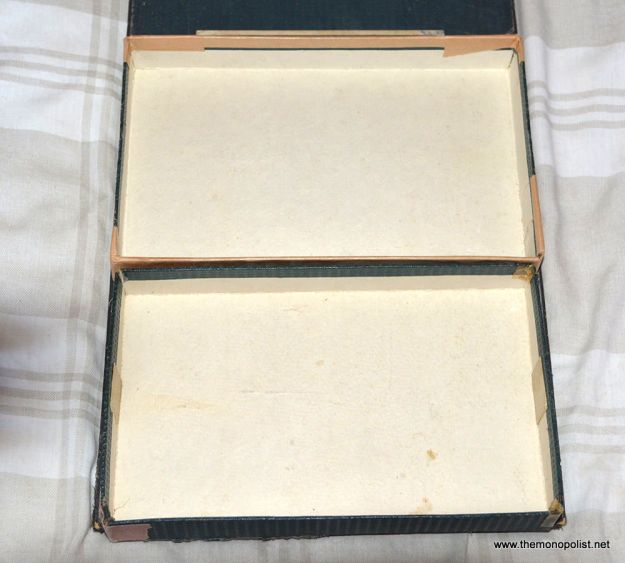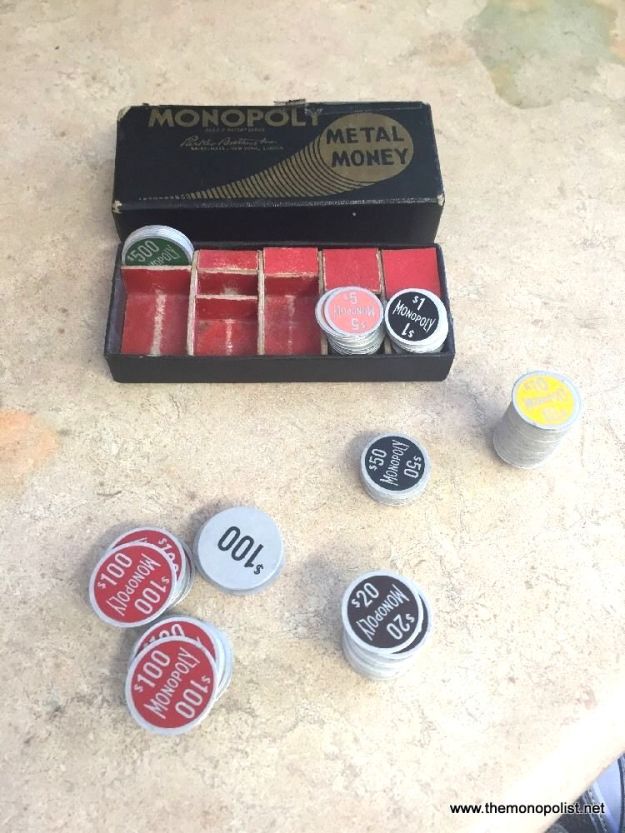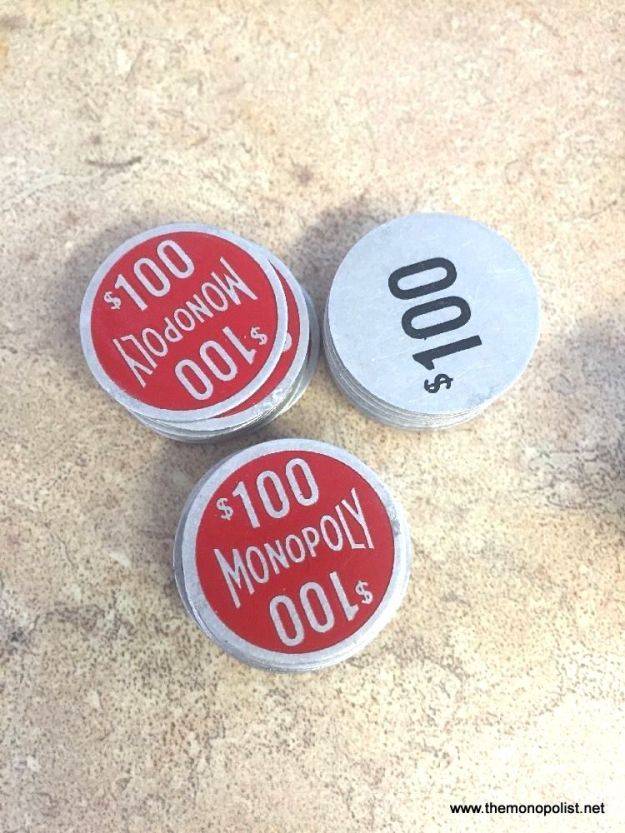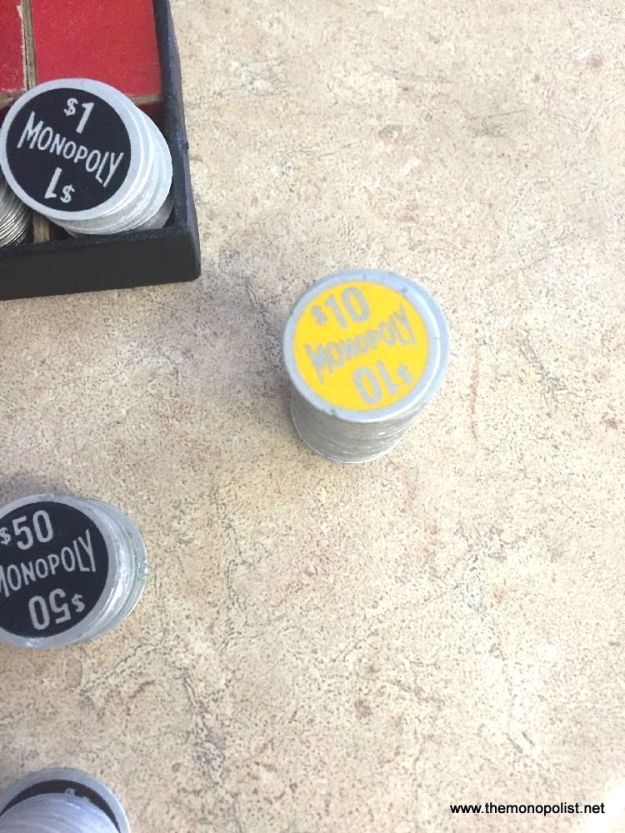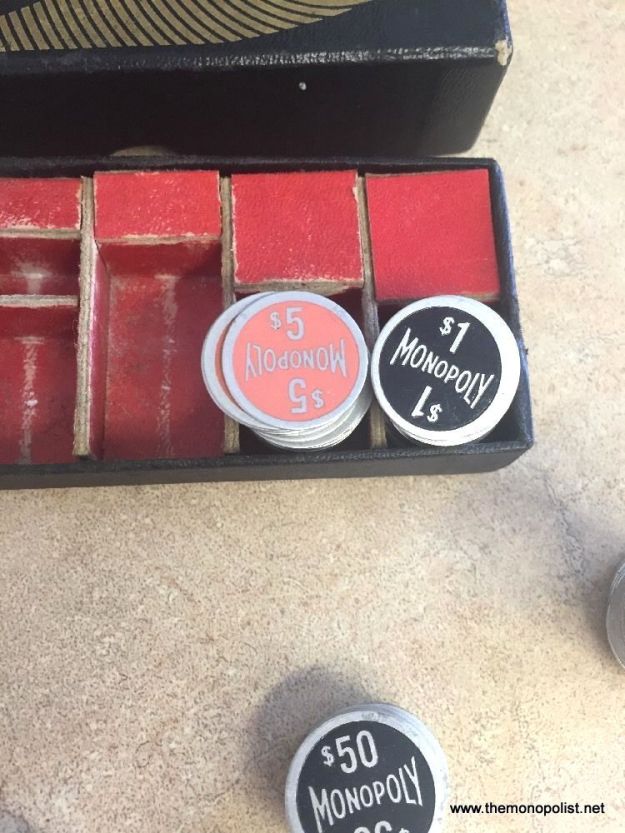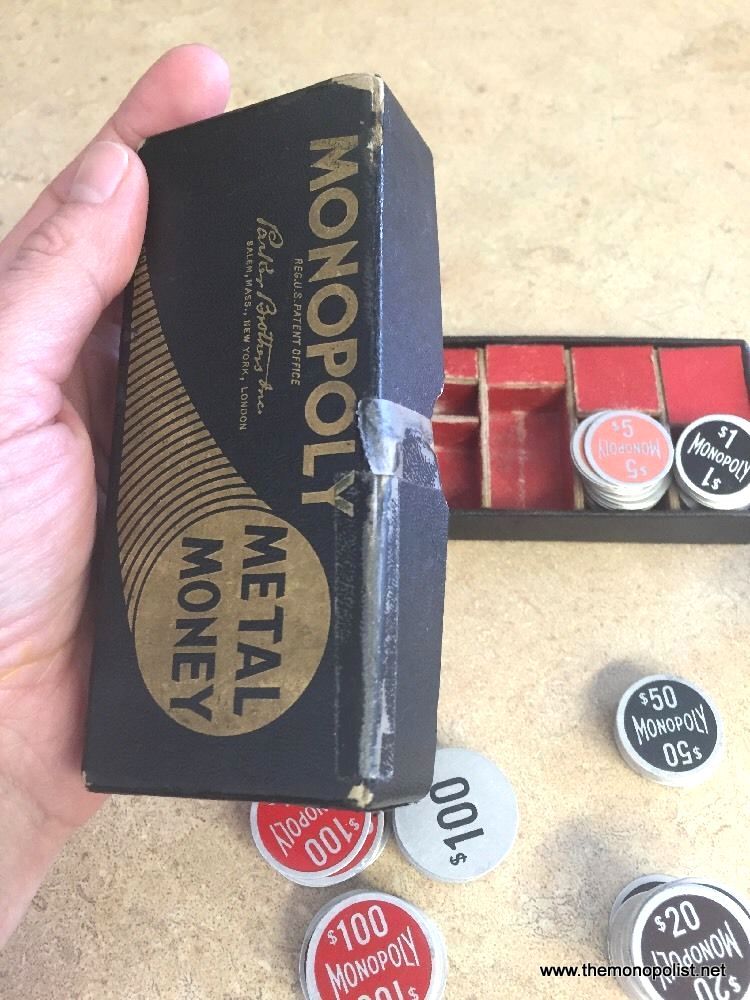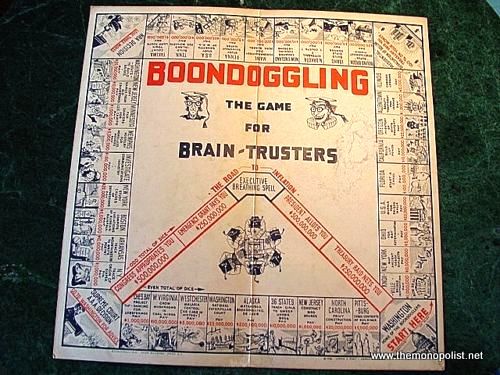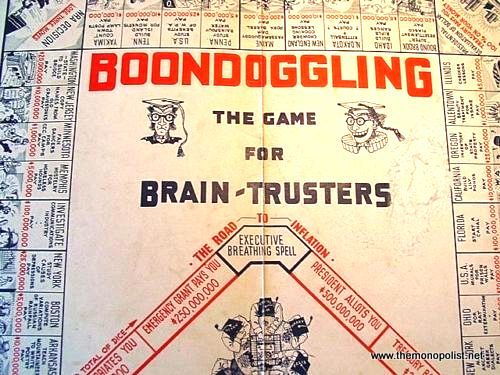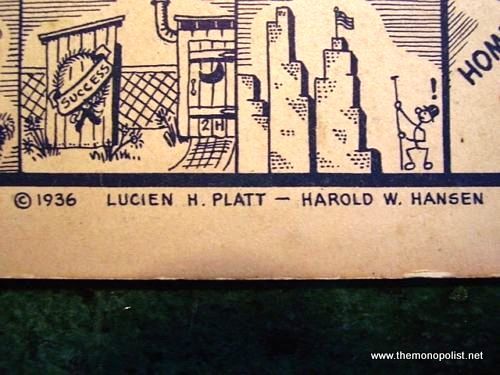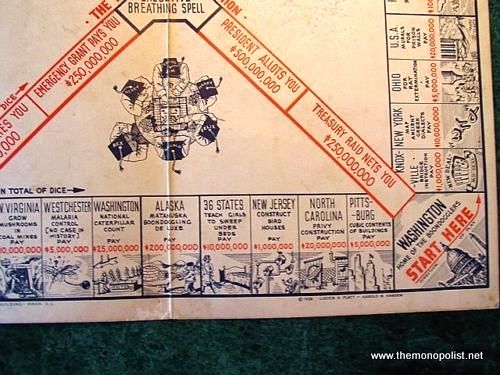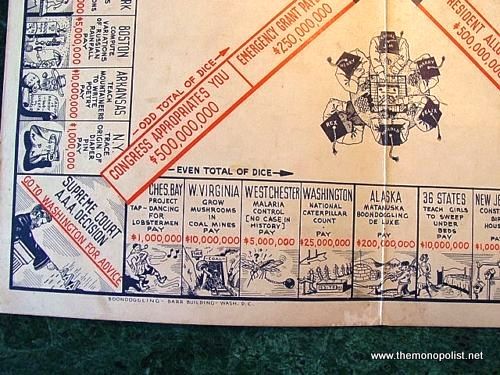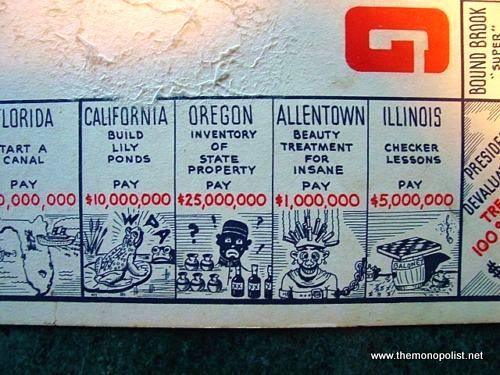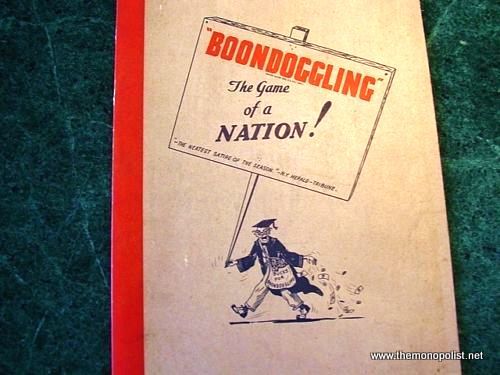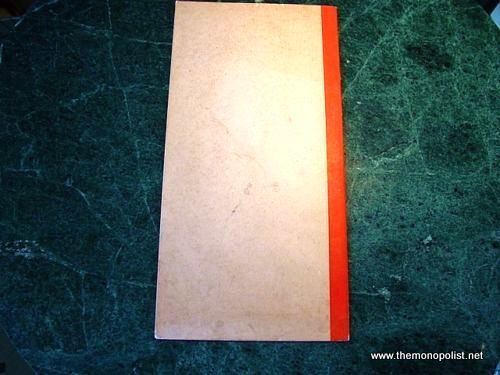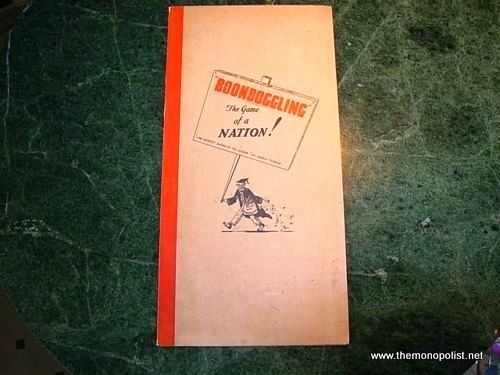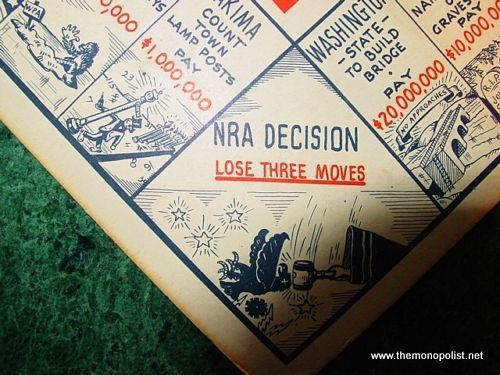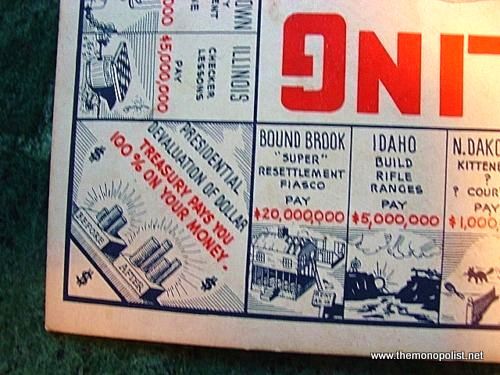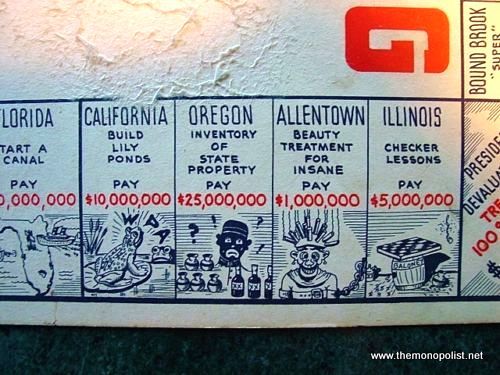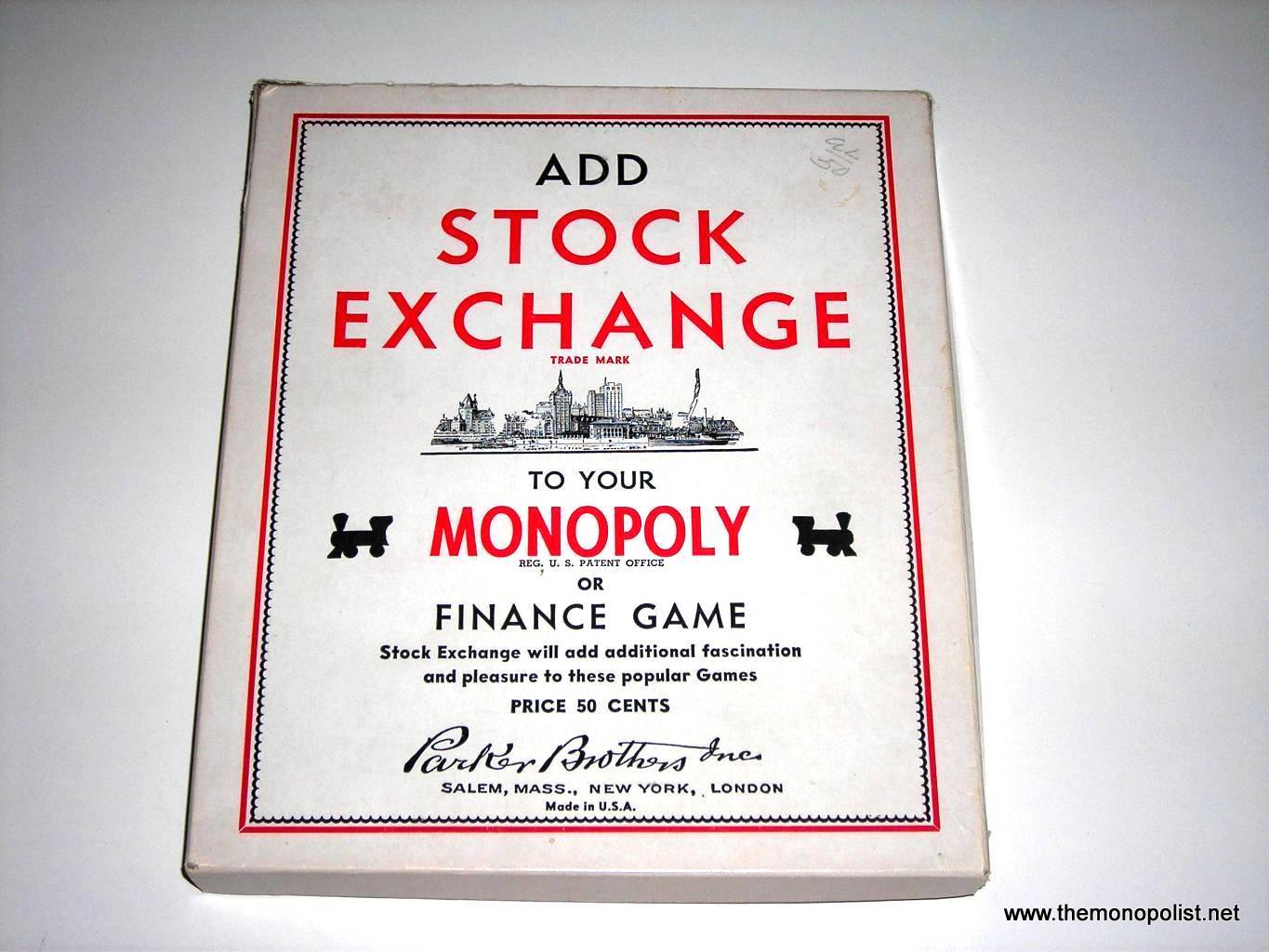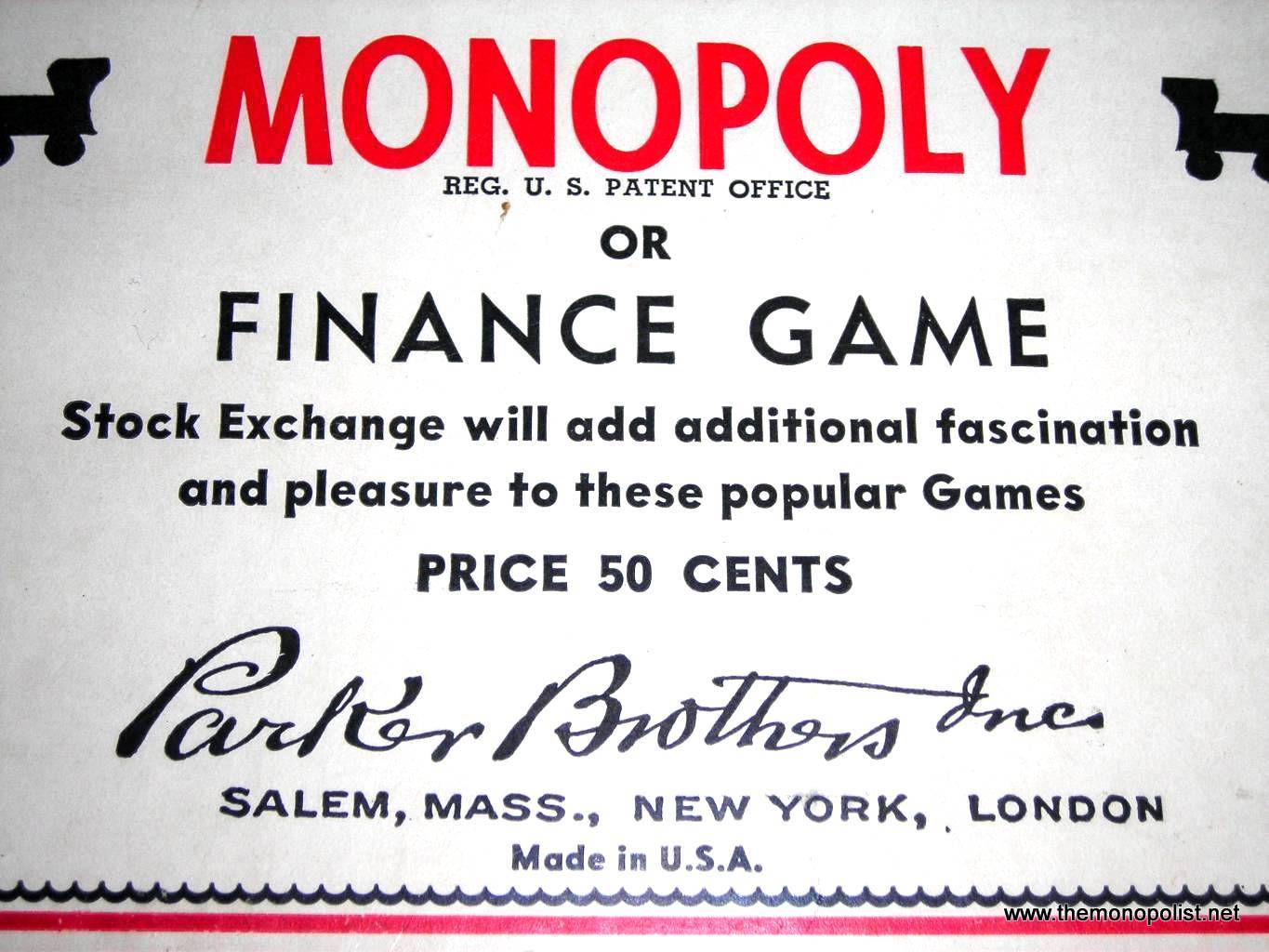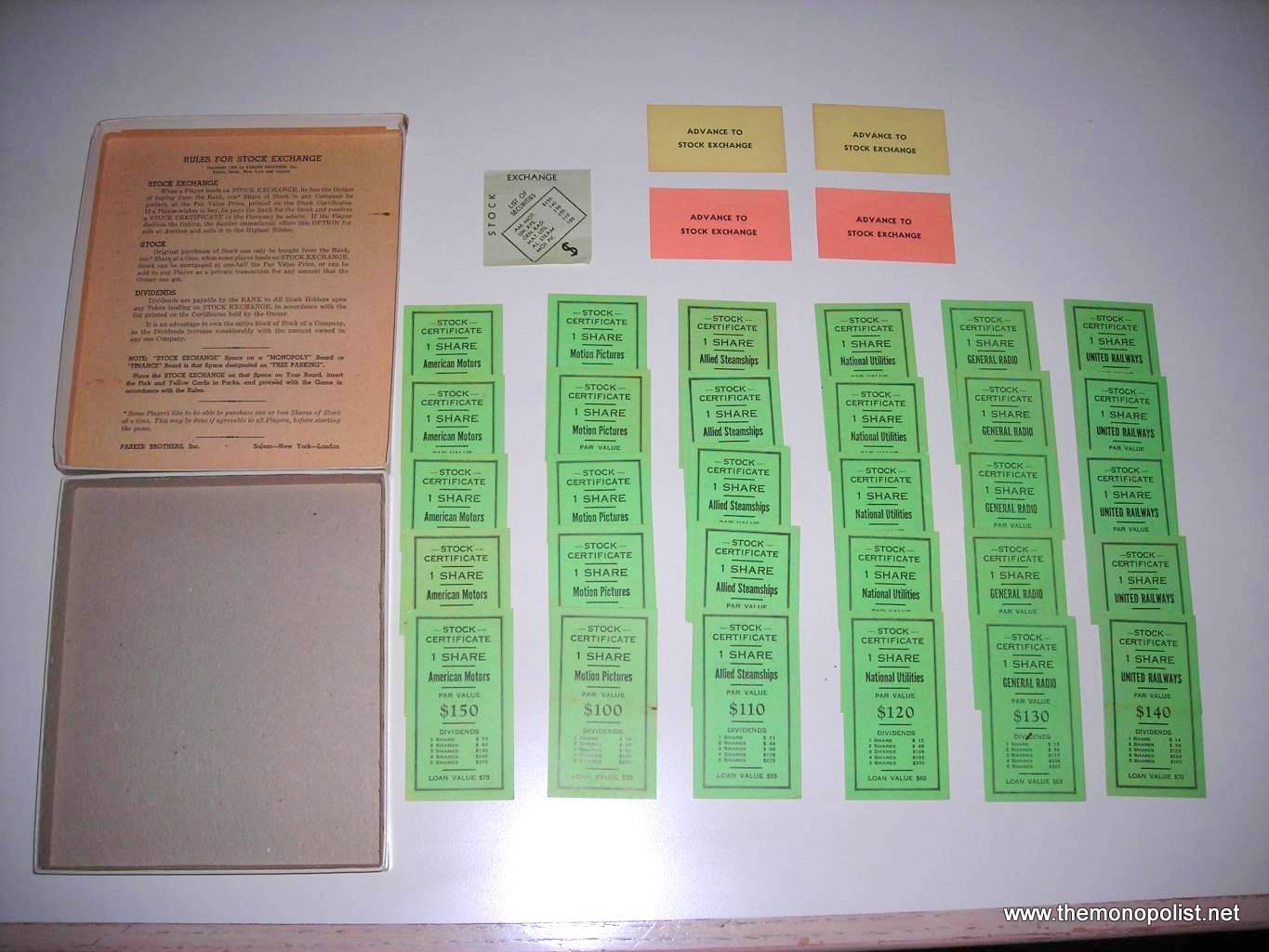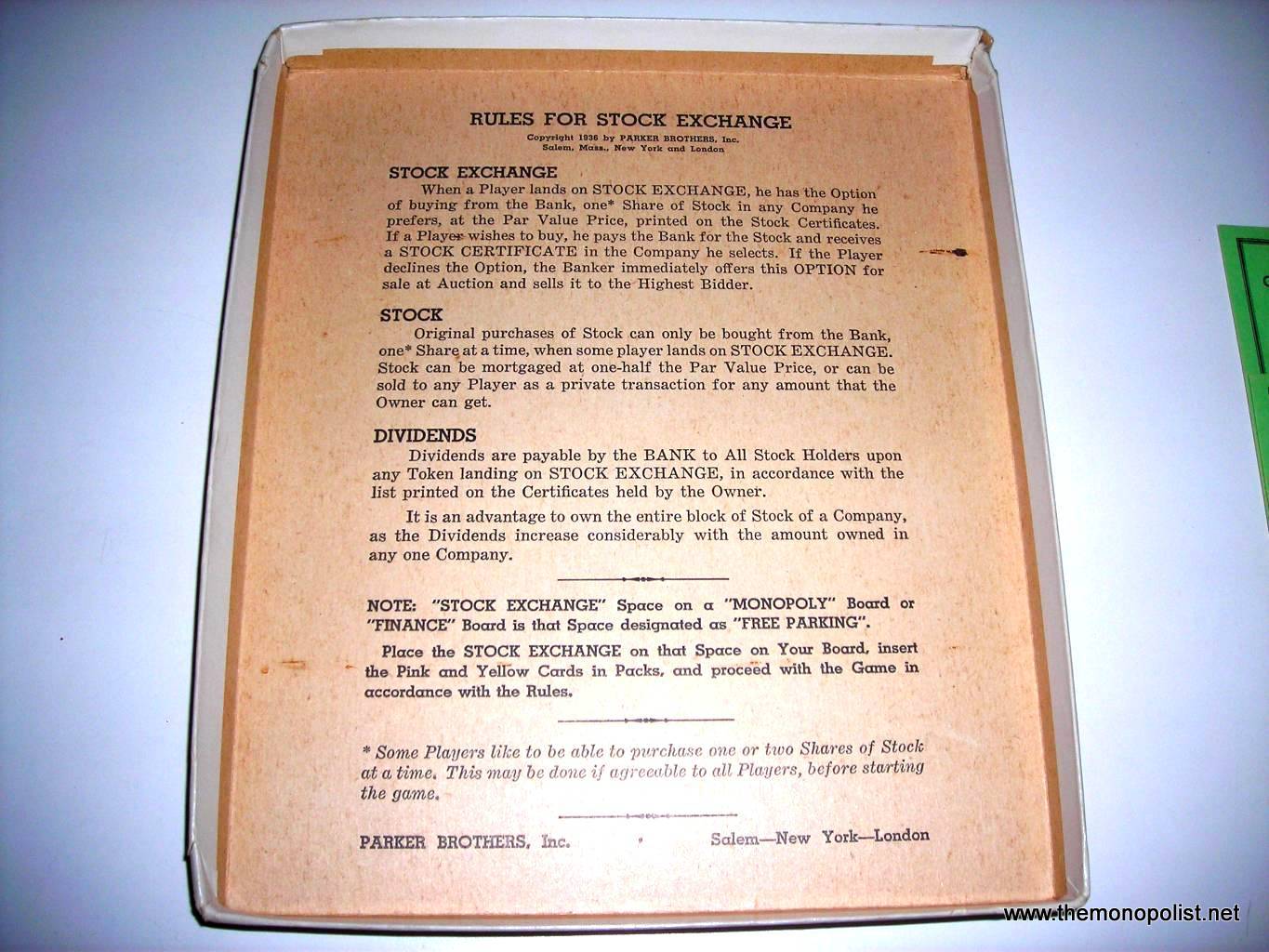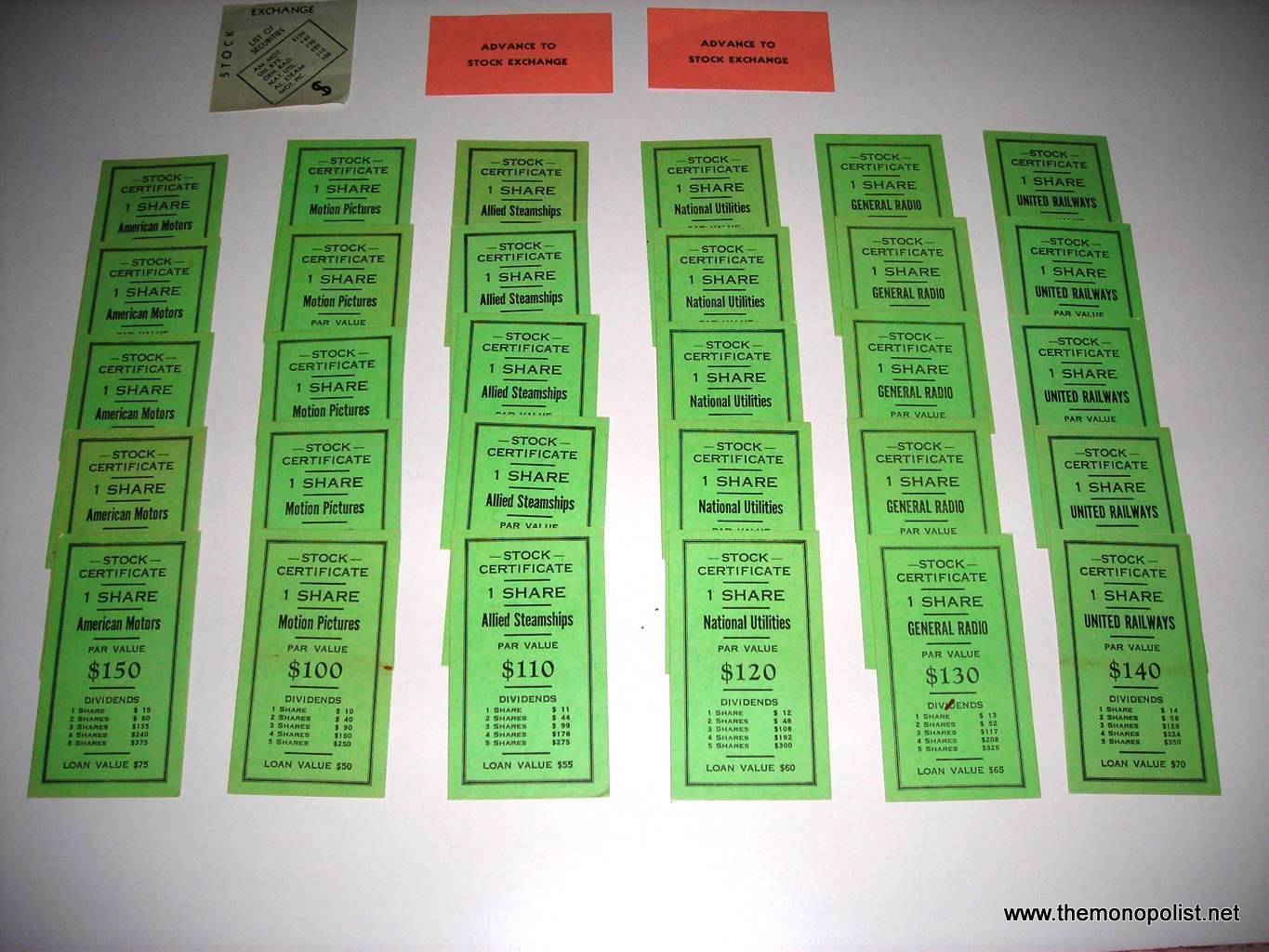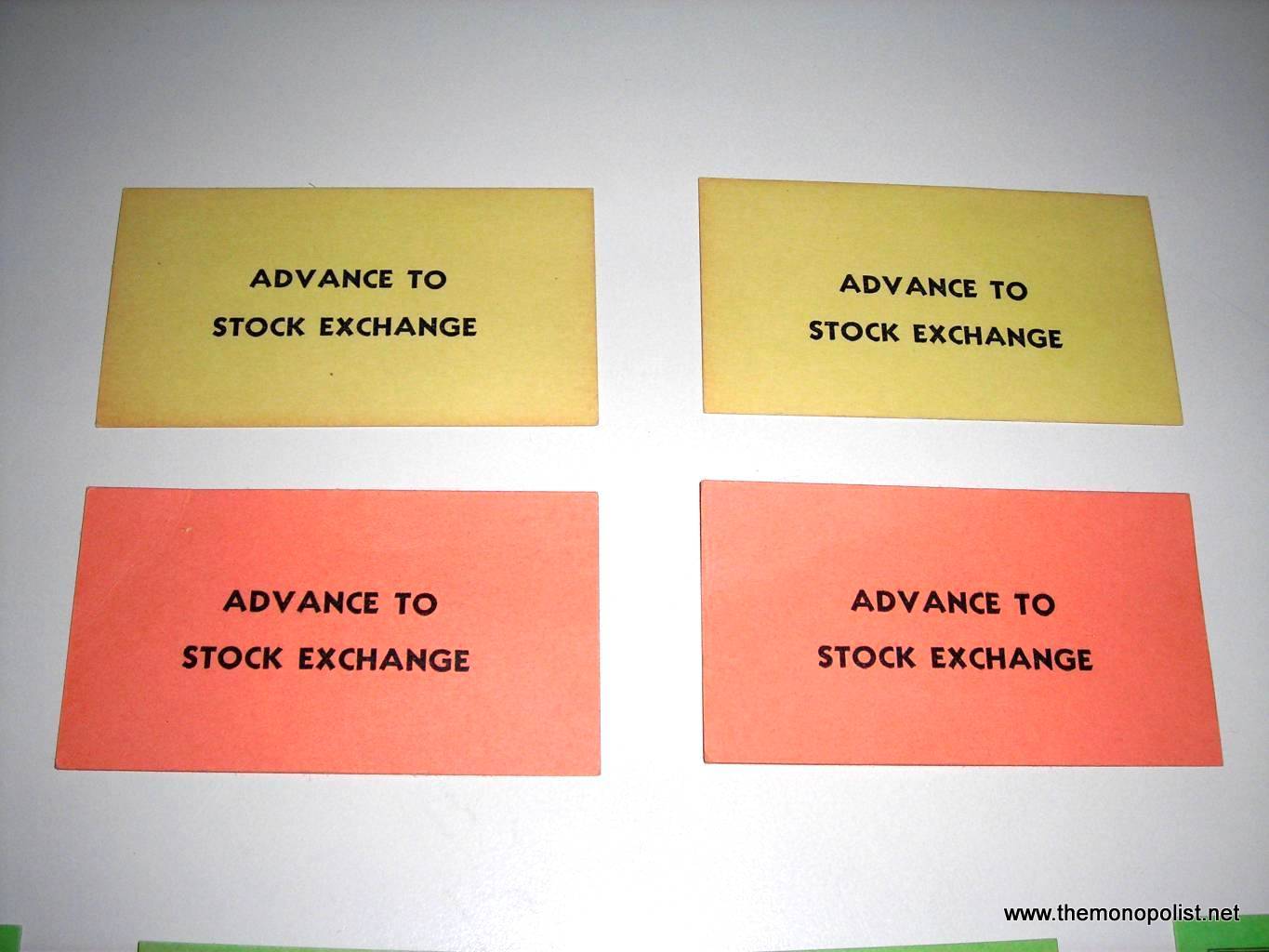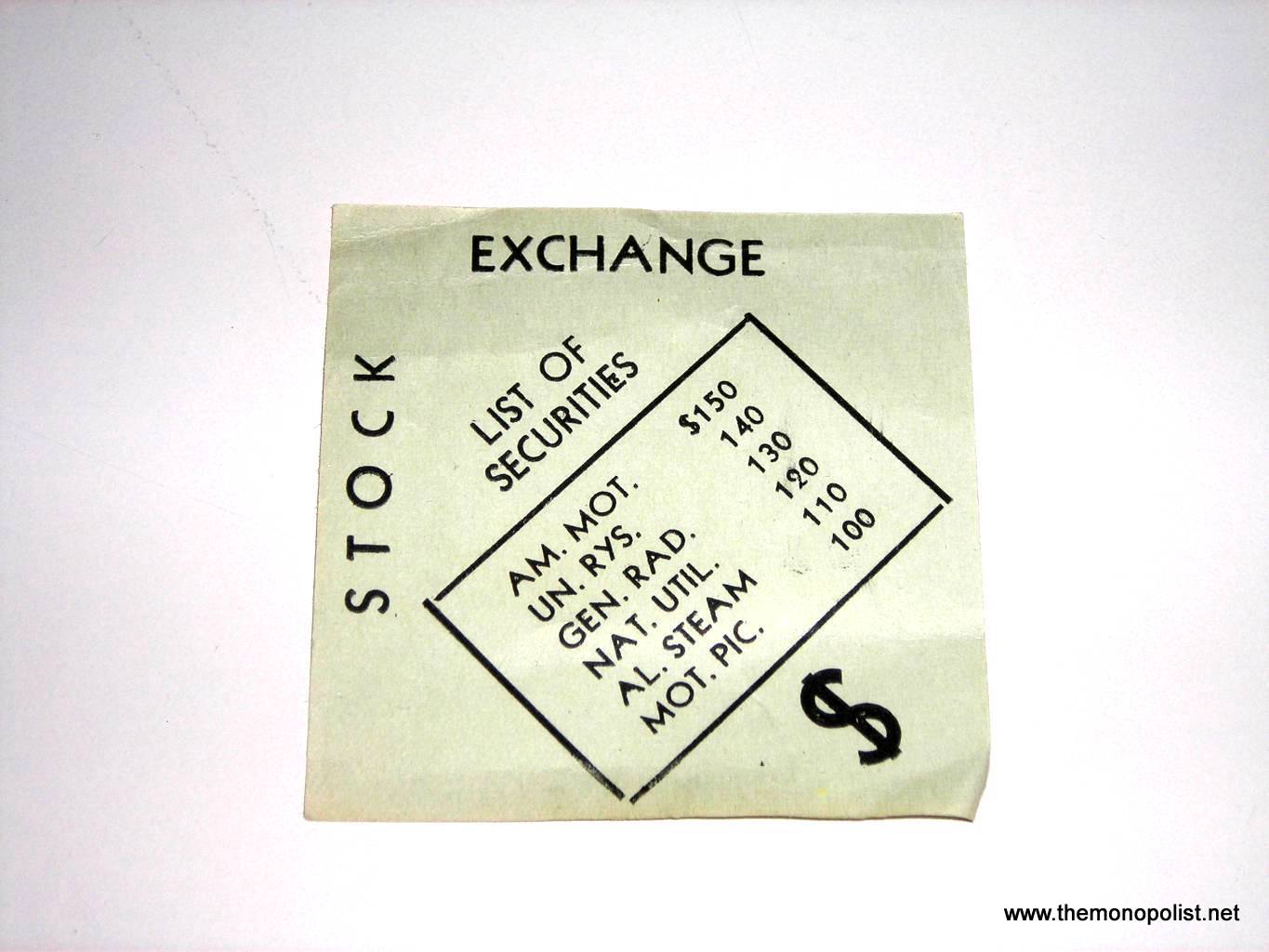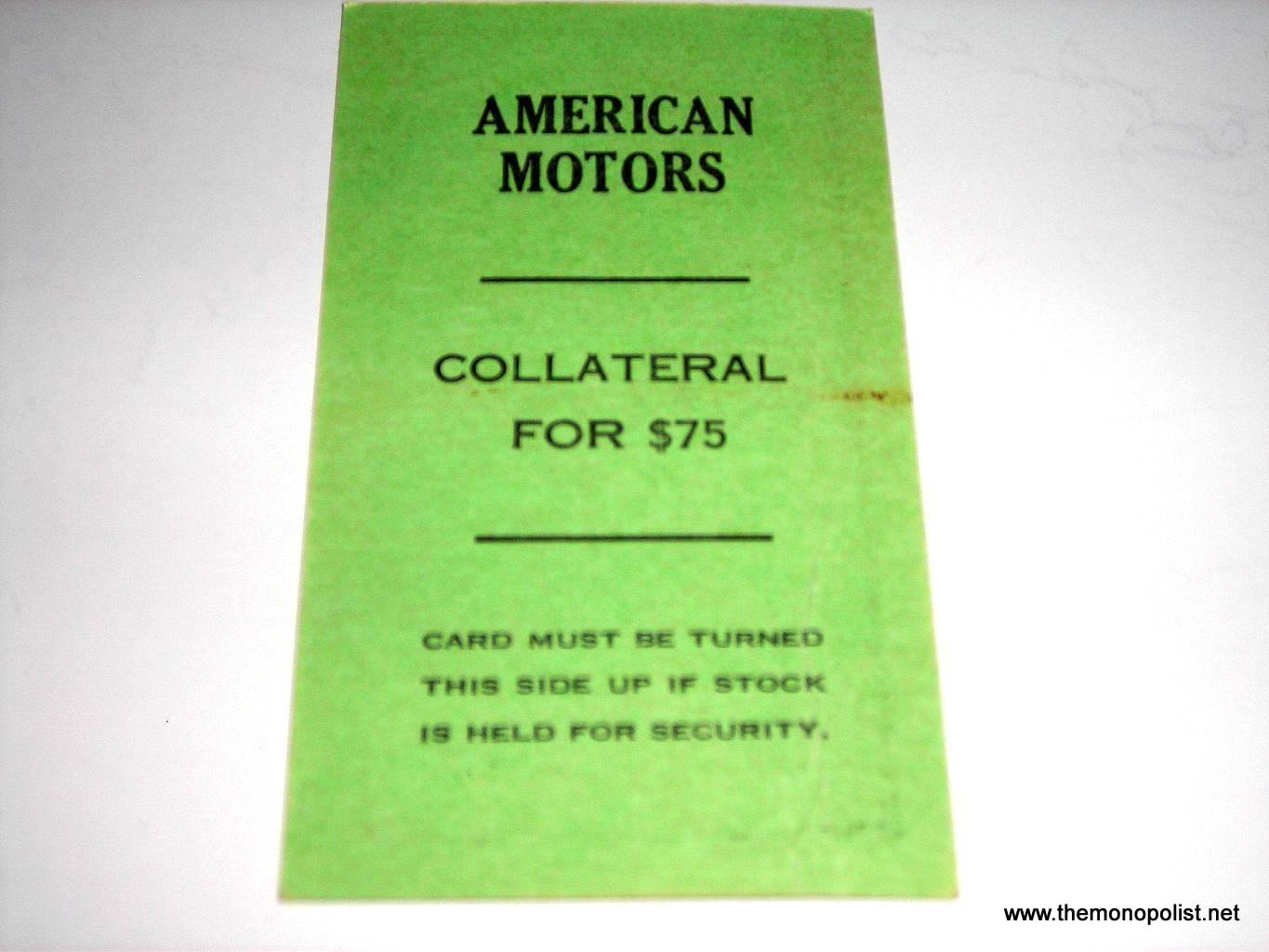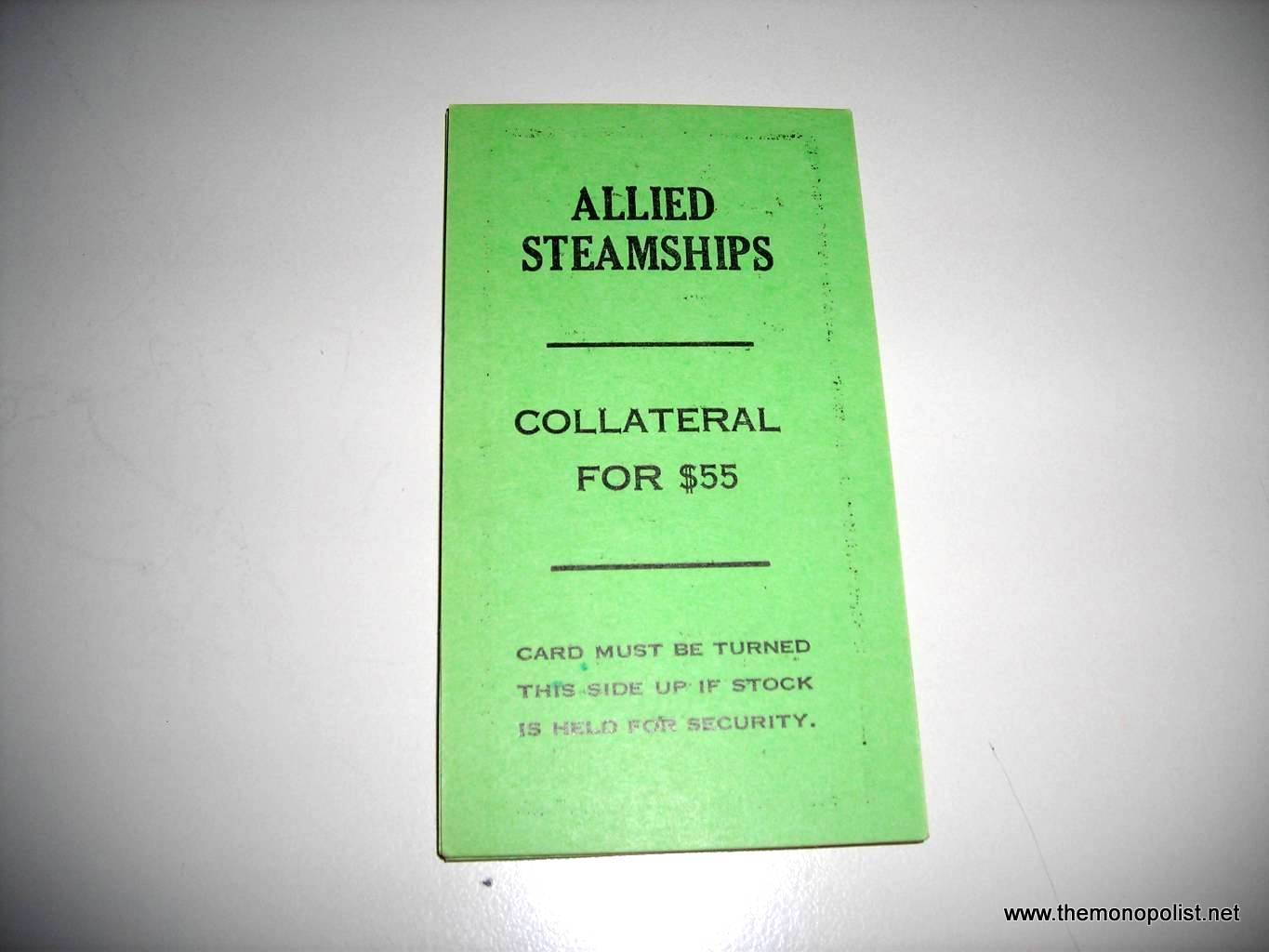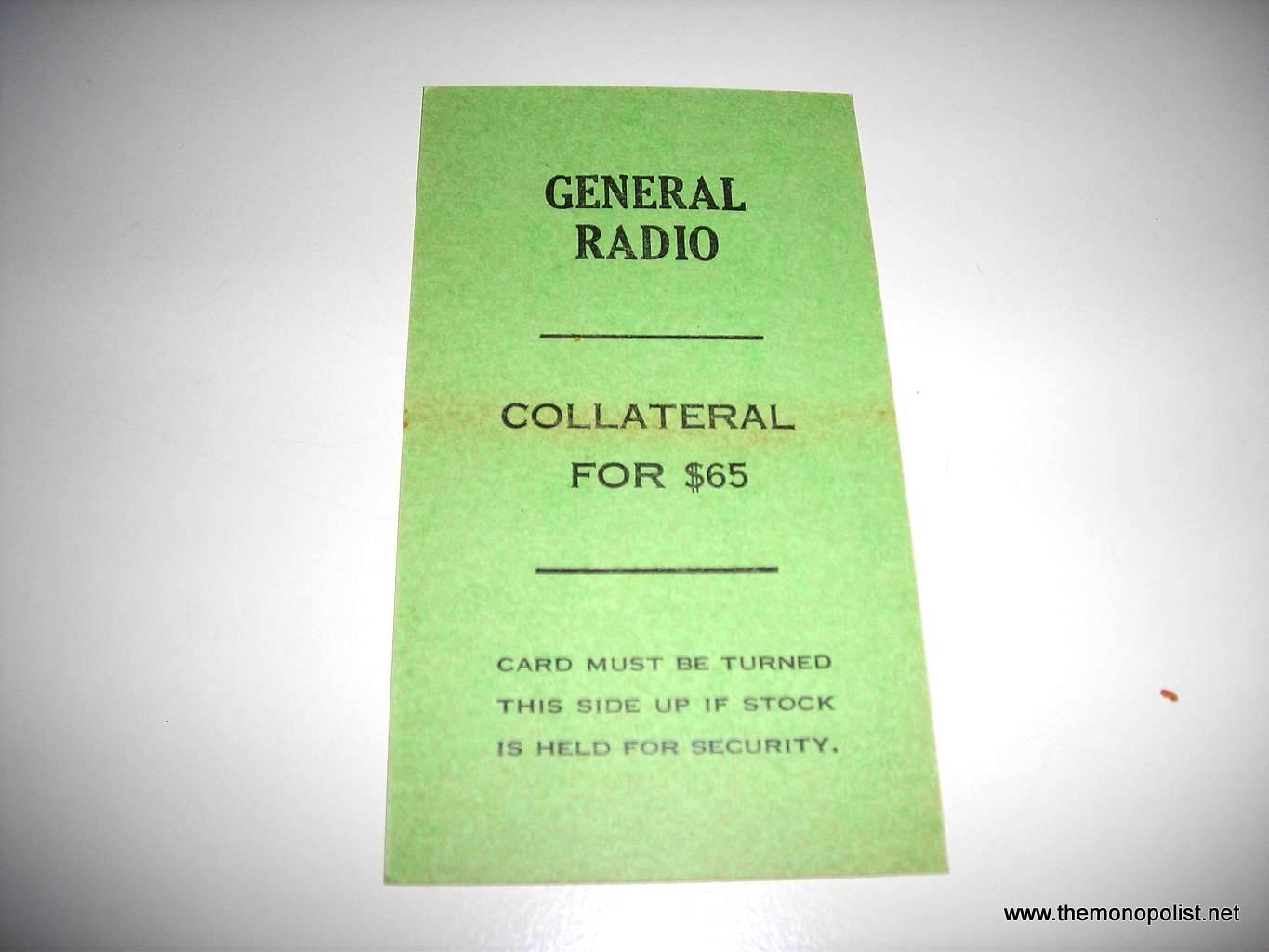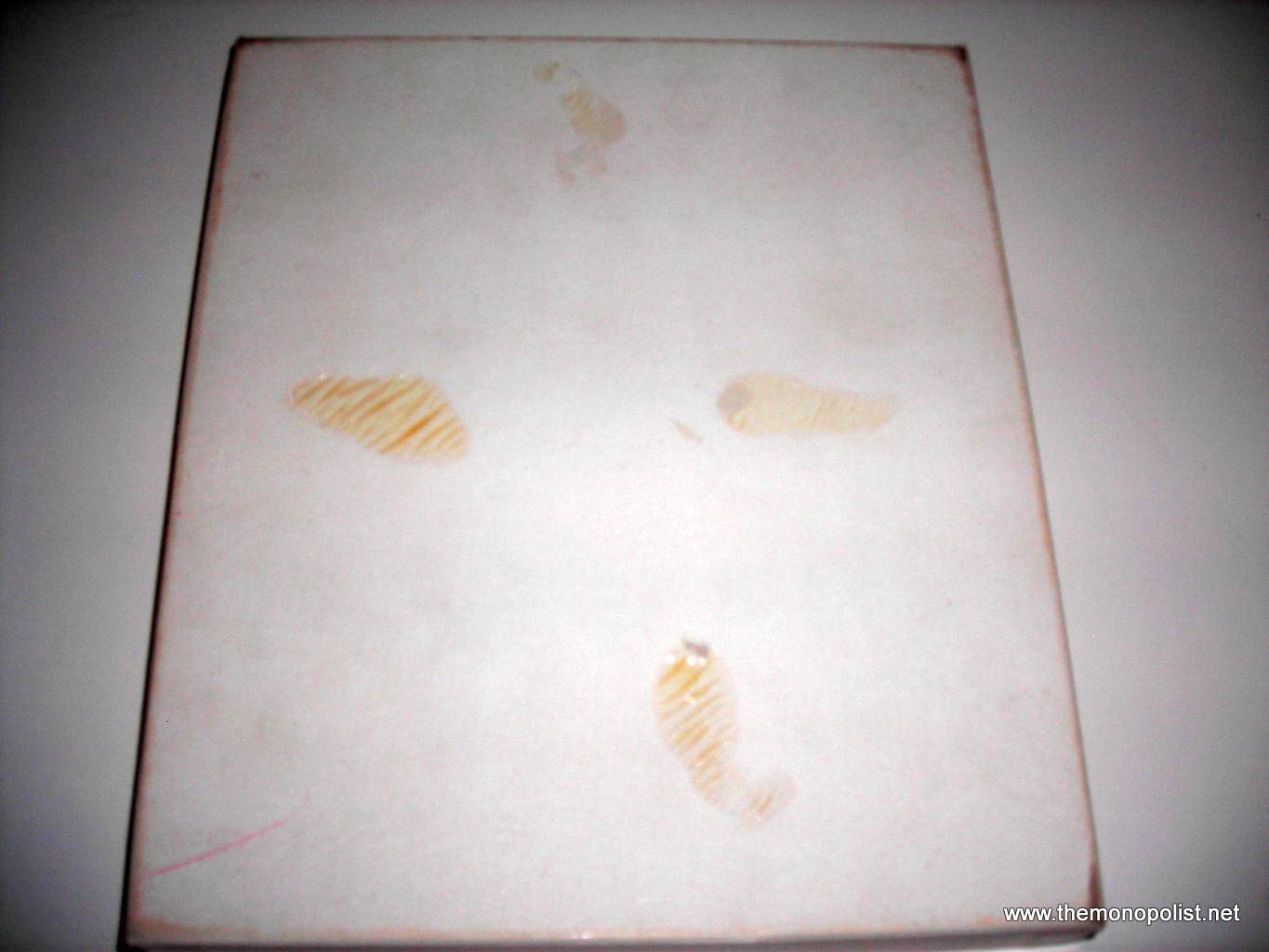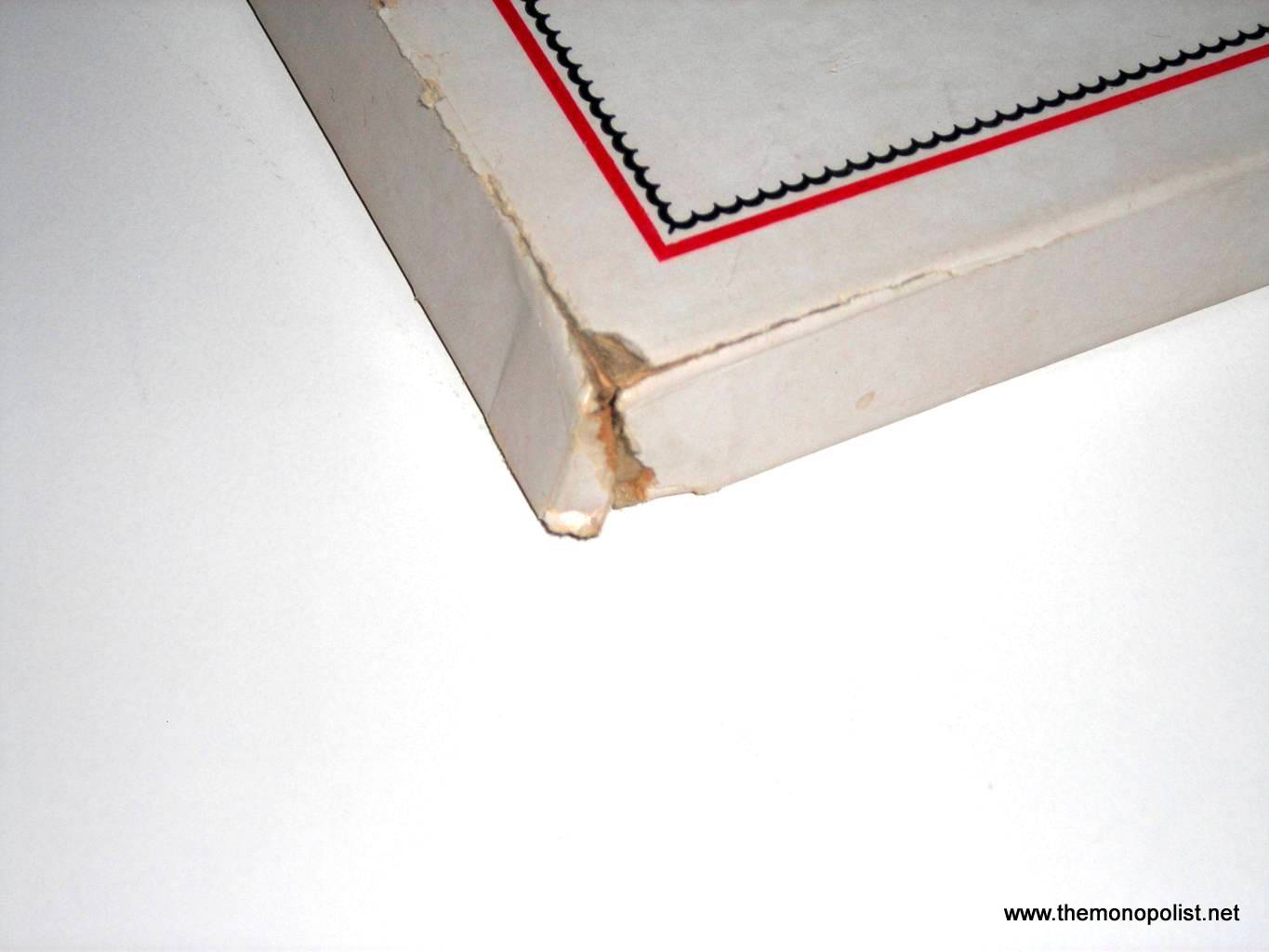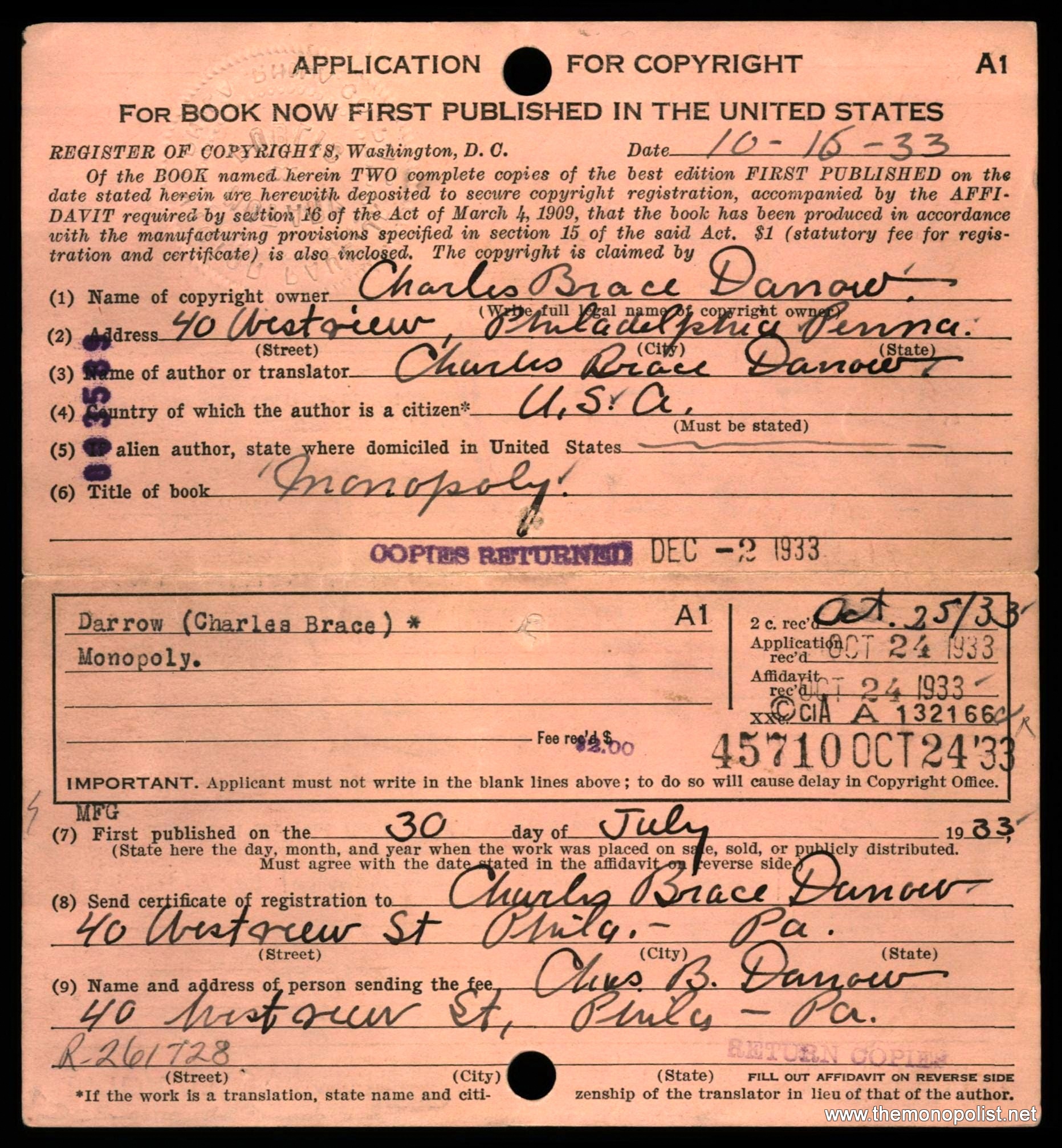 A new avenue for research into the early history of Monopoly has appeared. The Library of Congress is making images of the original index cards that go with copyright registrations available online via a new method.
A new avenue for research into the early history of Monopoly has appeared. The Library of Congress is making images of the original index cards that go with copyright registrations available online via a new method.
This means it’s now possible to see what’s written on the copyright registration card that Charles Darrow took out in 1933 for Monopoly. What did he copyright, exactly?
Darrow only put a copyright notice on his game boards, and never on the rules or anywhere else on his sets. The rules were changed over time, however, and copyrights themselves only offered limited legal protection.
My theory is, he sent the entire game, perhaps a Tiebox set. Any boards that have the 1933 copyright notice on them are from after the fact. From previous research, I found he copyrighted Monopoly in the same category as you would copyright a book. Two copies were required along with the notarized registration form and a fee.
Darrow applied for a copyright on Monopoly in October 1933, probably at the urging of his printer, F. Lytton Patterson Jr., who was likely very much used to applying for copyrights on books his firm published.
All Darrow’s previous games had been hand made, but once he started selling more of them, he turned to his printer friend for help. At first, they tried printing onto oilcloth, but this was difficult, and soon switched to a conventional board made of paper and cardboard.
The original publication date was listed as July 30, 1933, which could have been a problem later for Parker Brothers with the 1935 Monopoly patent #2026082. The patent was not actually filed until more than two years since the publication date, which could have been enough to invalidate it, if it had been challenged in court.
Supposedly, Darrow’s original copyright exhibits disappeared from the Library of Congress under mysterious circumstances. The story goes that Parker Brothers may have sent Darrow himself to remove them, as a way of muddying the waters on the true origins of the game, but I have no way of knowing if this is true. Parker Brothers copyrighted their own versions of the rules once they took over the game in 1935, and received a new copyright for the board that same year, after prices were added.
Thanks to John Buell, some of the relevant index cards have been located, both for Monopoly, the Stock Exchange Add-On, and Bulls and Bears.
Stock Exchange was purchased by Parker Brothers within a few months of going on the market in 1936, so the copyright was then assigned to them.
Charles Darrow assigned his copyright to Parker Brothers early in 1936. His 1933 copyright was good for 28 years, and was renewed in 1961, so there was another assignment for that.
In 1937, Parker Brothers hoped that their new Bulls and Bears game would be another success like Monopoly, but it was a dud, in spite of their use of Charles Darrow as a sort of “celebrity endorser.” His name was put on the game as the supposed inventor, but the copyright index files show the actual game’s creator was Clarence Paul Meier.
Here’s what I found about him online:
“A little about the artist, Clarence Paul Meier was born in Newark, NJ November 1897. He was the youngest of 3 children, served in the army during WWI. He married Virginia Stryker in 1921, they lived in Flushing, NY where he was an accountant. He had a cartoon published in 1928. His comic strip ran in the Long Island Daily Press, Jamaica, NY. He did some interior decorating work but my favorite works of his are the distinctive lithographs depicting lively bar, horse racing and other scenes of the happier era before prohibition and the economic depression of the early 1930’s.”
He died in 1976.
-David Sadowski
